
In this issue 14 Young growers seek out success 22 Orchards brave cold snap 44 Delivering farm-fresh VOL 95 | NO 10 | NOVEMBER 2022 New summerfruit varieties launch Page 38
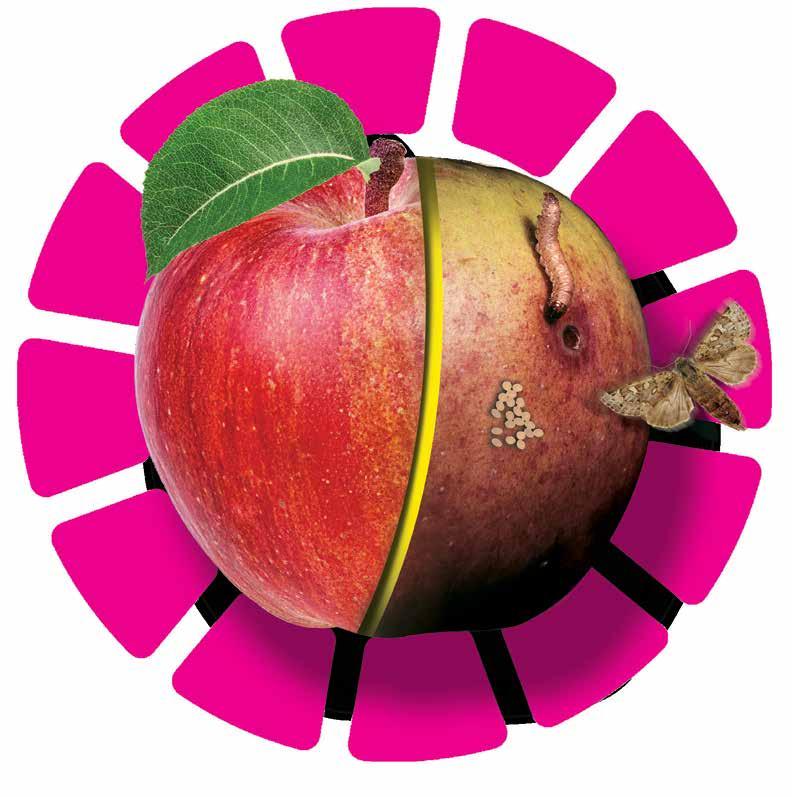

Rapid pest control. Better fruit! Registered
Unique, fast acting and systemic control of codling moth, leaf roller caterpiller and bronze beetle in pipfruit. • New chemistry with a unique spectrum of pest control • Strong proven activity against all life stages of moths • Fast cessation of feeding with systemic activity and excellent length of activity • Soft on key beneficials Insist on Vayego from Bayer today! We’re with you in the field | cropscience.bayer.co.nz BAC 2451 NE W
pursuant to the ACVM act 1997, No. P9623. See www.foodsafety.govt.nz for registration conditions. Approved pursuant to the HSNO Act 1996, No. HSR101424. See www.epa.govt.nz for approval conditions. Vayego® is a registered trademark of the Bayer Group. © Bayer New Zealand 2022.
The Chief Executive: Change is happening but takes time
Ahuwhenua enters 90th year of competition
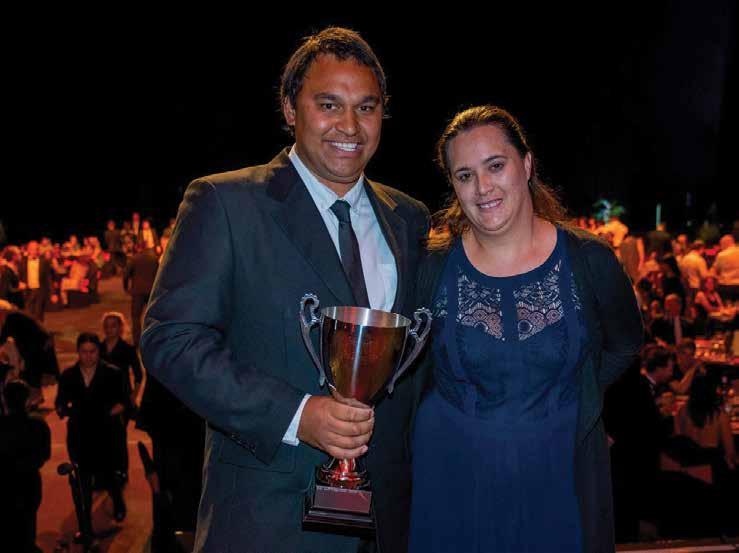
Institute innovations bring $46 million economic benefit
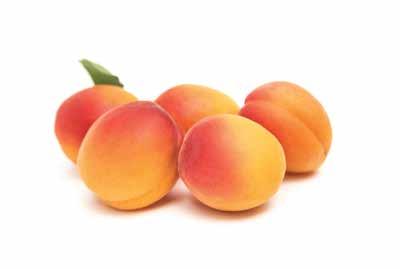
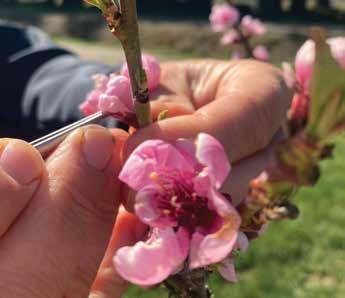
Ripe for the picking: Twenty years of research culminates in three new apricot varieties
Fight against fruit fly strengthened through biosecurity partnership
Delivering farm-fresh to consumers’ tables
What’s New
A regular advertorial section of new products and services. This publication does not endorse the products or services featured here. 60 PGG Wrightson Ltd –Experience and product knowledge assists customers with orchard conversions 61 Seed & Field – Making inputs work harder
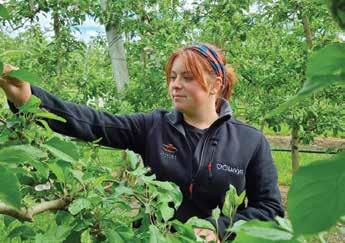
Young Pukekohe growers seek out success through horticulture
Meryn on a mission
Spring snow bites Central’s apricot crop
Orchards brave coldest ‘snap’ since records began
Using perennial plants to reduce herbicide use
Maternal approach to health and safety
Innovating for the perfect cherry, every time
“De-risking” change
A La Niña triple dip summer –Will there be any winners?
Up
4
Your
6
Your
9
14
18
22
24
26
30
34
38
42
44
46
48
51
Technical 53
58
Front 2 President’s Word: Extreme weather events or the new norm?
Levy at Work
Natural resources and environment
Industry
Precious land protected for future generations
Overseas perspectives
Contents
30 18 38 The ORCHARDIST : NOVEMBER 2022 1
NOVEMBER 2022
Extreme weather events or the new norm?
Just when we think the ground is starting to dry up, another deluge of rain sweeps across the country, causing water pooling as our soils are fully waterlogged.
Barry O’Neil : HortNZ president
We have just had our wettest winter on record – July 2023 was the wettest since records began in 1863. Multiple extreme rainfall events have resulted in severe flooding and slips across New Zealand.
Winter 2022 has seen low pressure system after low pressure system – to the point where pressure readings have been well below historical averages across every part of the country. Nelson for example, got one metre of rain over four days, and more than five times its typical August rainfall. This scenario has been repeated in many other regions including Northland, Bay of Plenty, Horowhenua and Canterbury.
And New Zealand has just had its warmest winter on record! The country now has had three consecutive record warm winters. Of the ten warmest winters since record keeping began, six have occurred since 2013.
We know 2021 was our hottest year on record. Last winter our coastal seas were also warmer than they have ever been, with persistent marine heatwave conditions.
And last but not least, we experienced a record cold weather event at the start of October, which brought snow down to sea level, record frosts and low temperatures.
Even areas not prone to spring frosts got hit. While it’s not the first spring frost, it was far more widespread, and while with climate change frosts may not be any more frequent in coming years, when they do occur, they will be more severe.
During these extreme events, we are hearing the use of new terminologies such as atmospheric rivers, microbursts, and thunder snow, which are all unfortunately rather alarming.
The one-in-one-hundred-year weather events that we have been dealing with historically are now more likely to be one in ten years. While previously we might have been able to shrug this experience off as bad luck, only once in one’s life time, this is no longer the case with climate change.
At the Horticulture Industry Forum in September in Nelson, we had a great line-up of speakers. Dr Dave Bellamy from Plant & Food Research gave a really good talk on what climate change will mean for New Zealand. What he said surprised me until I thought more about it.

We are a very narrow island surrounded by oceans. They are going to have a major effect on our climate, unlike the countries that have a huge land mass, which will affect their climate in different ways.
With us, the oceans will keep our country cooler than others. While temperature will increase due to climate change, our increase will probably be no more than 1.5 degrees, compared to countries with a huge land mass, which are likely to see far greater temperature increases.
The oceans will give us rain, lots of rain, just like we have experienced this winter. And it’s going to be rain that comes in buckets, not showers, which we will have to learn to live with and manage.
And on top of that, La Niña is likely to be with us again for the third year in a row, which in 2023 will exacerbate some regions getting hotter and drier over summer, and also continuation of a wet winter.
La Niña is likely to be with us again for the third year in a row, which in 2023 will exacerbate some regions getting hotter and drier over summer, and also continuation of a wet winter
This situation seems to go on and on!
2 The ORCHARDIST : NOVEMBER 2022 PRESIDENT’S WORD
The one-in-one-hundred- Devastation from the 7 October frost
year weather events that we have been dealing with historically are now more likely to be one in ten years
As a mate said to me after the frost event, ‘with the risks to growing that these events create, who would want to be in horticulture?’ I’m sure many of us are feeling this way, but we are in horticulture, we like being in horticulture, and most of us want to stay in horticulture.
With the inevitable change in weather patterns that climate change is bringing, some of us will need to adjust how we are growing if we want to stay in horticulture.




A drier summer seems to be a certainty. This means we need more water, and to achieve that, we need irrigation from stored water schemes as it’s getting nigh on impossible to be granted additional water takes from the ground or rivers. It’s such a no brainer that with the multiple rain events we have had over winter, we should be taking water from rivers when they are at high flow rates and storing it, rather than letting it flow out to the sea.
A wetter winter means we need very good drainage systems, but also some low-lying areas may just not be suitable for growing in these conditions unless we modify them such as with covered cropping options.





And frost events, while hard to predict, will require further investment in frost protection. There are plenty of options available, but none of them perfect. However, they are much better than not having any system at all.
It might be hard finding the capital to do much of this, but not investing is going to lead to more frequent years of significant crop losses in the future, something none of us want to see.
Unfortunately for me, the photo in this month’s column is from my orchard the day after the 7 October frost. Kia kaha. To secure your variety selections for 2024 delivery, contact us now ENABLING GROWERS TO BE WORLD LEADING
Change is happening but takes time
It appears that the world is under immense pressure at the moment.
Nadine Tunley : HortNZ chief executive

Current weather conditions suggest that climate change is happening possibly faster than was predicted or indeed, faster than we would have liked. The impact of the Russian invasion of Ukraine is affecting the world in terms of how secure people feel – particularly in the Northern Hemisphere – as well as affecting the global supply chain both in movements and increasing costs.
Closer to home, over the past few weeks our government’s change agenda has become more obvious, particularly for the primary sector. In the environment space, the National Policy Statement for Highly Productive Land was announced as well as the government’s response to the He Waka Eke Noa partnership’s recommendations for reducing agricultural emissions. In the labour space, Fair Pay Agreements are progressing and the Immigration minister announced an increase to the Recognised Seasonal Employer (RSE) scheme cap to 19,000 workers for the 2022–2023 season.
At the same time, the Government is introducing a tripartite agreement between industry, unions and the
Government, meanwhile missing Pacific representation much to our industry’s frustration.
A substantive tripartite agreement between our industry, unions and the government is also in place for reviewing the settings of the RSE scheme.
This level of change is unprecedented. That is not to say that change is not needed – and in terms of climate change, the world’s response is looking like it is overdue – but what I think is being forgotten is how long change takes and how complicated it is to work through and implement.
In our industry, the application of technology is rightfully held up as being fundamental to meeting new requirements, in both the areas of the environment and labour. Few growers would argue with this but what is forgotten is how long, expensive and fraught changes in technology are. Think of how debilitating – at least in the short-term –a major computer upgrade can be on any organisation, big or small, then extrapolate that at least ten times to appreciate the impact of a major technology change on growing.
Editors: Emily Pope
Ph: 027 617 6200
Email: emily.pope@hortnz.co.nz
Andrew Bristol Ph: 021 021 62 021
Email: andrew.bristol@hortnz.co.nz
Advertising Manager:
Jackie Enright
Ph: 04 494 9986
Mobile: 0274 489 913
Email: jackie.enright@hortnz.co.nz
Design: Scenario.co.nz
Ph: 04 385 9766
Email: joy@scenario.co.nz
Subscriptions: Email: info@hortnz.co.nz
This publication uses vegetable based inks and environmentally responsible paper produced from Forest Stewardship Council® (FSC®) certified, Mixed Source pulp from Responsible Sources.
Paper produced using Elemental Chlorine Free (ECF) and manufactured under the strict ISO14001 Environmental Management System.
This magazine is posted in an EcoPure plastic sleeve. EcoPure accelerates the biodegradation of treated plastics in microbe-rich environments. Plastics made with EcoPure are biodegradable in aerobic and anaerobic environments.
AT WORK
THE CHIEF EXECUTIVE



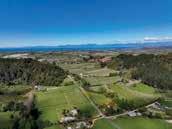
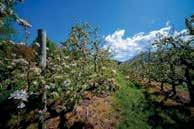
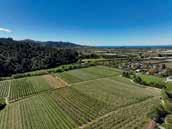
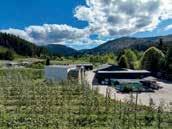
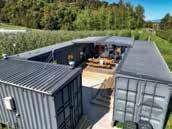
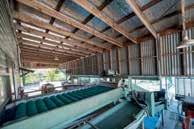
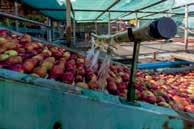

Natural resources and environment
Sarah Cameron : HortNZ senior environmental policy advisor
Freshwater Farm Plan pilots in the Waikato, Gisborne and Southland
The Ministry for the Environment (MfE) is drafting new regulations that will set a national direction for Freshwater Farm Plans across the country. These regulations will capture orchards/farms with five or more hectares of horticultural land use, and those with 20 or more hectares of arable/pastoral/mixed land uses. Freshwater Farm Plans will capture all owned and leased land blocks.
The planned rollout of the regulations begins in 2023 with three regions – the Waikato, Gisborne and Southland. MfE is looking to undertake pilots in these regions before the end of the year.
HortNZ and Good Agricultural Practice (GAP) are engaging with MfE to get it to recognise industry assurance programmes like GAP to deliver Freshwater Farm Plans. We are working with growers and councils to run parallel pilots using GAP to deliver on regulated freshwater outcomes. If you grow in the Waikato, Gisborne or Southland, and you have been contacted by your council to participate in a Freshwater Farm Plan pilot, please contact HortNZ and we can support you.
You can also visit our website to read more and register for a Freshwater Farm Plan webinar in November or December.
Tūtaekurī, Ahuriri, Ngaruroro, Karamū Catchment (TANK) Regional Plan – Decision Notified
The Independent Hearing Panel has made its decision on Proposed Plan Change 9: Regional Resource Management Plan – Tūtaekurī, Ahuriri, Ngaruroro, Karamū Catchment. The decision was notified on 9 September 2022.
There are many aspects of the TANK decision that HortNZ supports, however, we have made a targeted appeal to seek clarity for growers.

Far North District Plan
HortNZ submitted on the Far North District Plan. We sought the following outcomes:
• Definitions and rules that recognise the importance of primary production
– Reverse sensitivity
– Ancillary earthworks
– Seasonal accommodation
– Greenhouse
– Artificial crop protection and crop protection structures.
• Provisions that recognise highly productive land in line with the National Policy Statement for Highly Productive Land
• Strategic direction that provides for primary production and which is not compromised by other activities
• Requirement for councils to undertake indigenous biodiversity mapping and not landowners
• Less restrictive operating rules for audible bird scarer devices and frost fans
• Provisions for activities and buildings/structures that are an inherent part of horticulture
• Appropriate setbacks for dwellings, buildings and artificial crop protection structures from boundaries.
Whakatane District Plan Change 6 –audible bird scarers
HortNZ also submitted on this plan change and sought the following outcomes.
HortNZ and New Zealand Kiwifruit Growers Incorporated (NZKGI) opposes proposed Plan Change 6 (PC6) in its entirety and seek withdrawal of proposed PC6.
HortNZ and NZKGI accepts the need for provisions in the district plan regarding noise levels to ensure they are appropriate for the rural operating environment and that compliance with such noise limits can be enforced. However, it is HortNZ and NZKGI’s contention that PC6 is inappropriately balanced towards residents and will have a negative impact on horticulture production in Whakatane.
Of specific concern to HortNZ and NZKGI is the monitoring undertaken by the council detailed in the Section 32 Report. It has not been robustly confirmed that the issue in Whakatane relates to audible bird scaring devices that comply with the operative limits or whether the issue relates to non-compliance.
YOUR LEVY AT WORK 6 The ORCHARDIST : NOVEMBER 2022

ALWAYS READ AND FOLLOW LABEL DIRECTIONS. © Copyright BASF 2022 ® Registered trademark of BASF. 212553 09.2022 Attack spore germination early. A new dimension in fungicide chemistry - delivering rapid and lasting protection with a flexible application window. Creating more attractive apples, pears and grapes. Experience the maximum fungicidal effect. Discover our range of Orchard solutions for your best season yet Talk to your local reseller or visit crop-solutions.basf.co.nz
INDUSTRY

Spring bites Page 22
YOUR
ACROSS THE SECTOR — ACROSS THE COUNTRY
Precious land protected for future generations
Over the last 20 years approximately 35,000ha of New Zealand’s highly productive land has been carved up for residential development and a further 170,000 converted to lifestyle blocks. KRISTINE WALSH speaks to growers on the government’s National Policy Statement for Highly Productive Land and how it affects them.
From the home designed under the eagle eye of his wife, Caroline, in the 1990s, Geordie Witters can see the hill country on which he farms sheep and beef, and in front, the rows and rows of citrus he grows on gentle slopes and flats.
Being on family land, it is a view he has enjoyed his entire life and one he is reassured to know will change little in the future.
Located on the fertile Poverty Bay Flats, just out of Gisborne, the gentler parts of the Witters’ property are protected under the local District Plan and can’t be subdivided into portions of fewer than eight hectares. Now, those protections are to become even stronger with the release of the government’s National Policy Statement for Highly Productive Land (NPS-HPL).
Announced in September, NPS-HPL represents years of work on how to support food security by offering enhanced protection for some of the country’s most productive land.

That’s important: only about 15 percent of New Zealand is categorised as highly productive – with just one percent rated at the highest level of productivity – and once built on, it is very hard to rehabilitate degraded soils.
The aim of the policy statement is to improve how we protect Highly Productive Land (HPL) from inappropriate subdivision, use and development.
“We need to house our people and to feed them, too… our cities and towns need to grow, but not at the expense of the land that’s best suited to grow our food,”
FEATURE ARTICLE YOUR INDUSTRY The ORCHARDIST : NOVEMBER 2022 9
Environment Minister, Hon David Parker, said during the announcement.
“The NPS-HPL will help protect our best growing areas, so Kiwis continue to have access to leafy greens and other healthy foods.”
Agriculture and Trade Minister, Hon Damien O’Connor, noted the significant economic and employment benefits to communities that stem from protecting HPL, as well as the food it provides for New Zealanders.
“[Highly productive land] underpins the value of New Zealand’s primary sector,” he said. “Once land is built on, it can no longer be used to grow food and fibre. That’s why we are moving to protect our most fertile and versatile land, especially in our main food production areas.”
While there has been a widely positive reception to the government’s National Policy Statement for Highly Productive Land (NPS-HPL), not all growers are on board.
Vegetables New Zealand chair, John Murphy, says up to half the growers he has spoken to are concerned about how the statement could impact on their businesses, now and into the future.

growing business, Murphy’s New Zealand, John manages 85 hectares of leased land.
Perhaps ironically, much of that is in Canterbury, as large tracts of HPL closer to home have been planted in grapes, which don’t need the high-quality soils his business requires.
“In fact, we could actually benefit as this policy could keep lease prices down, so personally, I don’t have a dog in this fight,” he says. “My input is based on Vegetables New Zealand’s desire to ensure the voices of our growers are heard.”
He rejects the view of ‘greedy growers’ wanting to have it both ways by maintaining the right to carve up land, at the same time preventing it from being used for horticulture in the future.
“At the end of the day we are all trying to make a living for our families by maintaining viable vegetable growing operations,” he says.
He says restricting the use of HPL could impact on its value and consequently make it harder to raise capital for operating purposes.
“The worry is that the net worth of the land a grower has purchased will be eroded,” John says. “If the value of land is capped because a regional authority limits its use and earning capacity, then the viability of growing could be impacted, and we don’t think that is addressed in the new policy statement.”
Vegetables New Zealand believes the intent of the policy was good, in that it addressed some issues around reverse sensitivity in the face of urban creep.
“What we are worried about is how the fundamental financial backing for growers could be eroded… there is no point in protecting HPL if we can’t afford to grow on it,” John says. “So, at this stage, it is important that we work with regional authorities to establish how they will enact the policy and ensure growers have some input into that.”
The feedback John received indicated growers were divided on their support for the policy, with strong feelings on both sides.
As chief executive of his family’s Marlborough garlic
“We are not confident that regional authorities are best placed to decide how land should be used. We think growers are best placed to do that.”
Other groups are worried that the policy is a little too late and will take too long to come into force.
“My concern is that it will take at least three-and-a-half years to implement and it relies heavily on co-ordination between authorities,” says Bioprotection Aotearoa director, Professor Amanda Black. “While it came into effect on 17 October 2022, any land already marked for subdivision will still go ahead.
“There are also a number of exceptions to protecting highly productive land that beg the questions: will the NPS be able to adequately protect our future food supply? And is this too little, too late?”
Horticulture New Zealand says that there is still work to be done to ensure growers can “sustainably and profitably” use highly productive land.
“HortNZ has advocated for nearly a decade for government policy that recognises the importance of our best soils and ensures that they are prioritised for what they are best for… producing healthy vegetables and fruit,” says HortNZ chief executive, Nadine Tunley.
“All along we have said that, with good planning, New Zealand can have fresh vegetables and fruit, and houses.”
What we are worried about is how the fundamental financial backing for growers could be eroded… there is no point in protecting HPL if we can’t afford to grow on it
YOUR INDUSTRY 10 The ORCHARDIST : NOVEMBER 2022
Vegetables NZ chair, John Murphy
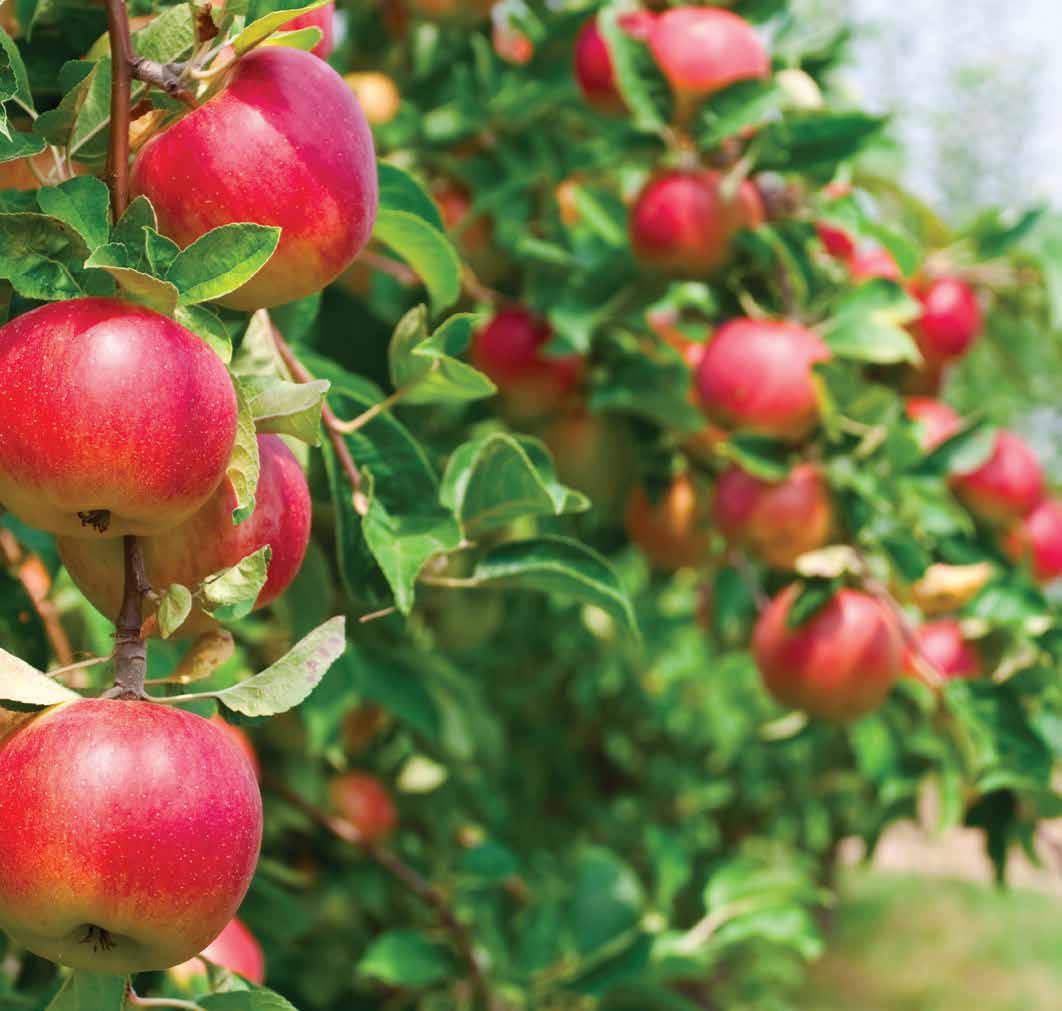
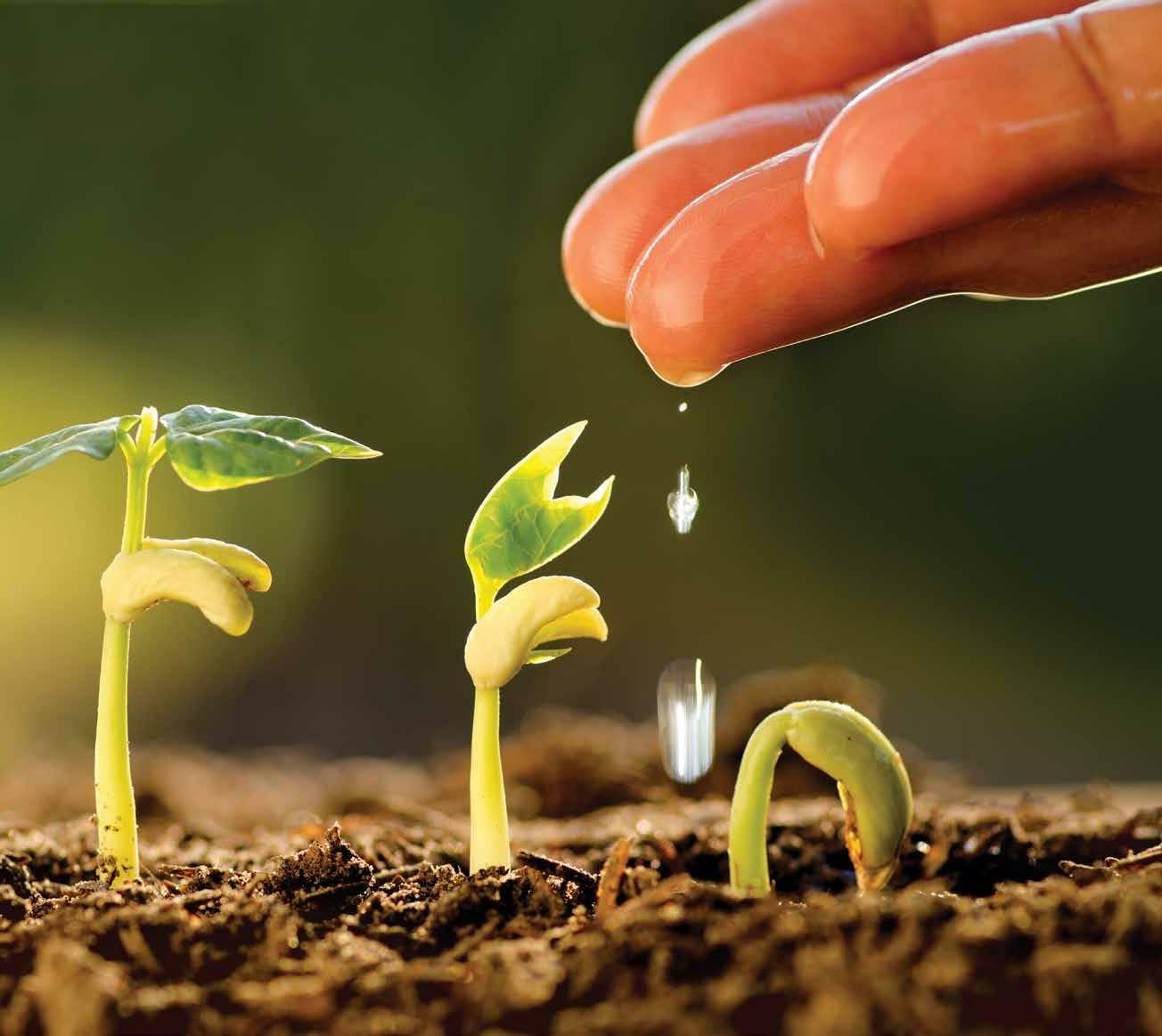
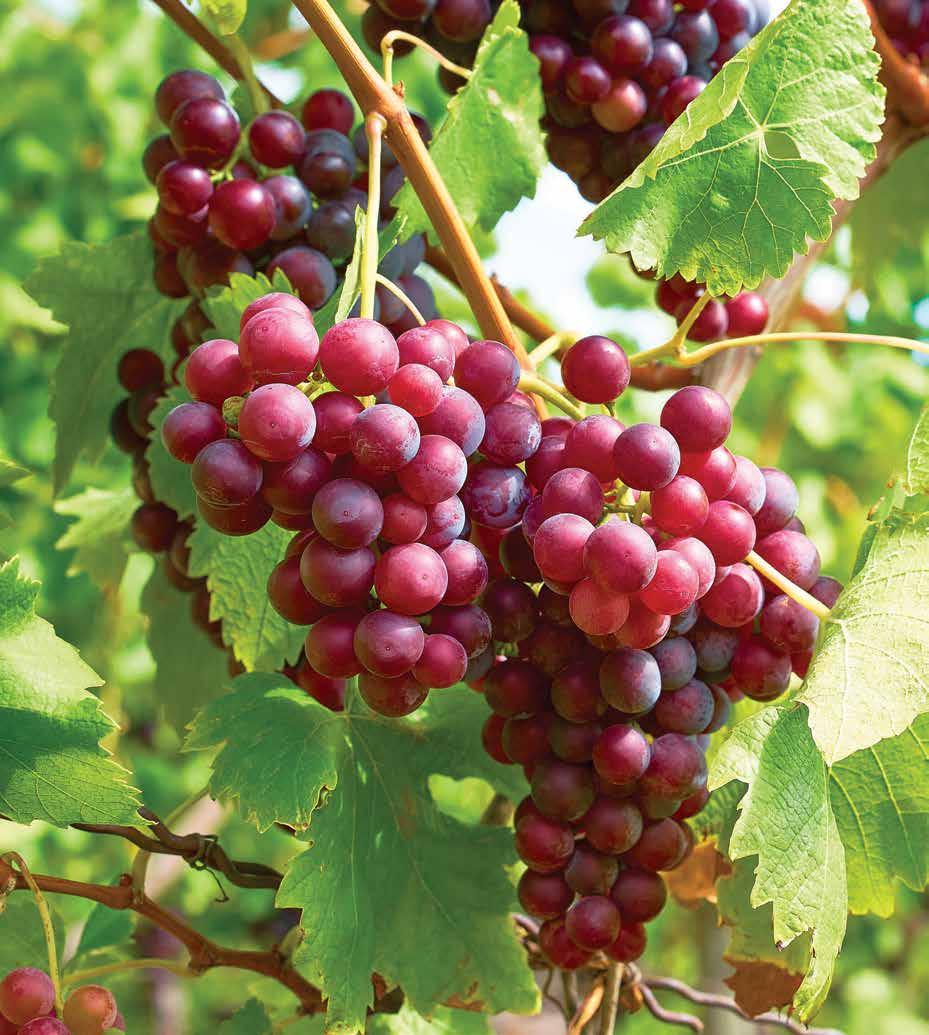
crops so you don’t have to.
crop
INSECTICIDE Qalcova ™ active Naturalyte™ Entrust™ SC FUNGICIDE Kocide®Opti™ INSECTICIDE Prodigy™ INSECTICIDE Isoclast™ active INSECTICIDE Jemvelva ™ active Sparta™ INSECTICIDE Jemvelva ™ active Uphold™ INSECTICIDE Fenamite™ FUNGICIDE Fontelis® FUNGICIDE Talendo® FUNGICIDE ZORVEC Enicade FUNGICIDE NEOTEC Dithane Rainshield Visit us at corteva.co.nz ®, ™ Trademarks of Corteva Agriscience and their affiliated companies. COR-ORCHHORT-CTA0038
Delivering a complete suite of
protection solutions for today’s horticulturists. Our portfolio of powerful, proven products has helped growers from one end of New Zealand to the other create and maintain thriving businesses, and has earned us an excellent reputation in horticultural crop protection. Our suite of insecticides and fungicides provide growers with everything they need in the war against pests and diseases. Visit corteva.co.nz to view our range of products and online horticultural resources.
In its announcement, the government said the NPS-HPL would sit alongside other initiatives like the National Policy Statement for Freshwater Management and the National Policy Statement on Urban Development.
“This recognises that using land for primary production needs to occur within environmental limits and ensures that all land can be used and managed to best effect,” Minister Parker said. “In limited circumstances councils will still be able to rezone highly productive land for urban housing if less productive land is not available, or if certain tests can be met.
“However, the NPS-HPL will introduce strong restrictions on the use of highly productive land for new rural lifestyle developments.”
Before land can be protected it must first be identified, and as part of that local bodies are required to identify potentially HPL that is in a general rural or rural production zone; is predominantly Land Use Capability (LUC) 1, 2, or 3 classification; and forms a large, geographically cohesive area.
Using that information councils must, “as soon as practicable” – but no later than three years after the start date of 17 October 2022 – notify in their regional policy statement the parts of their regions that are to be mapped as HPL. Until this work is complete, the default definition of HPL is land covered by those LUC 1, 2 and 3 classifications, as set out by central government.
Like many of his contemporaries around the country, Gisborne District Council (GDC) environmental scientist, David Sluter, has a hand in that work by carrying out soil monitoring that will help paint the national picture.

David started testing last year at 12 sites in Gisborne – a number constrained by pressures caused by the Covid-19 pandemic – taking in sheep and beef farms, native vegetation areas, and a couple of sites used for cropping, such as maize. But that number is ramping up, and for 2022 he has a programme of 36 sites to get to, with the aim of averaging out at 30 properties a year.
“That first year was a challenge but we’re now slowly working our way through the identified sites for what will be
a five-year programme,” David says. “After that we plan to revisit the sites every five years so we can map any changes.”
The GDC says its region has some of the most elite soils in the country, but without monitoring them, it is not known what condition they are in, or how their use is impacting on surface and groundwater.
Its monitoring programme is not just about helping council meet its obligations under the new NPS-HPL… it will also act as an early warning system to identify any changes to the health of the soil.
Throughout the programme, the GDC’s Environmental Science and Integrated Catchments team will continue to visit sites from hill country to coastal lands to (naturally) the highly fertile Poverty Bay Flats.
David confirms that, to date, landowners have been keen to get on board.
“That’s because we are clear about what we are there for and how it will support the health of us all… we’re not there to wield a big regulatory stick,” he says.
“That’s something they’re interested in too, and over time they’ll be able to see and respond to their own results.”
For David, it is good use of the science degree he earned in Wellington, after he moved from the United Kingdom to New Zealand 15 years ago.
“I think my contemporaries all around the country are passionate about this work,” he says. “It could have benefits not just for our generation, but for generations to come.”
Read the National Policy Statement for Highly Productive Land online: https://environment.govt.nz/ assets/publications/National-policy-statement-highlyproductive-land-sept-22-dated.pdf
LAND USE CAPABILITY
New Zealand’s Land Use Capability (LUC) classification has eight classes starting at number 1, the elite soils that make up just one percent of the country, to the mountain lands qualifying at number 8.
According to Landcare Research, versatile soils –those with the fewest limitations to their use – fall into LUC classes 1, 2 and 3.
LUCs 1 and 2 cover around five percent of New Zealand, while LUCs 1, 2 and 3 cover about 14 percent, and much of that land – like that in Pukekohe – is close to major urban centres.
It is that land, with LUC classifications of 1, 2 and 3, that will be protected under the new National Policy Statement for Highly Productive Land.
YOUR INDUSTRY 12 The ORCHARDIST : NOVEMBER 2022
Gisborne District Council environmental scientist, David Sluter
NATIONAL POLICY STATEMENT FOR HIGHLY PRODUCTIVE LAND







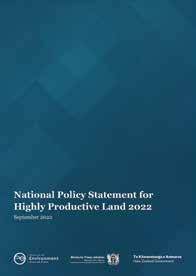
Around the country, local bodies are taking different approaches to meeting their obligations under the new National Policy Statement for Highly Productive Land.


In August of this year, for example, Hastings District and Hawke’s Bay Regional councils joined forces to hold a symposium to explore issues around the highly productive land of the Heretaunga Plains and beyond, and its value to growers, producers and the wider economy.


At the time, Hastings mayor Sandra Hazlehurst said Hawke’s Bay was the largest apple-producing region in the country, and the second largest wine producer after Marlborough, demonstrating the importance of the Plains to horticulture and viticulture and of those industries to her region.

Economic success has created pressures and threats to the land resource, she said, so the region has had to develop strategies to determine how growth would be managed, and soils protected, for the future.
The region’s soils took nature millions of years to create, added Hawke’s Bay Regional Council chair Rick Barker.
“They are nature’s gift that must be protected… we humans cannot create them, and they won’t come


again. These soils fuel our horticulture, viticulture and agricultural sectors. It’s on these soils that we have built our wealth.


“A growing population has driven urban expansion, putting irreplaceable soils under houses, factories, concrete and tarmac. If this expansion doesn’t stop we will have smothered the goose that lays golden eggs.”
Local governments must protect these irreplaceable soils by redirecting development elsewhere, he said.
“Protecting the environment and these fertile soils has to be a non-negotiable, no compromise, number one priority transcending any and all the individual interests of developers and landowners.
“We must accept that we individually are temporary guardians of the land, and that the land will be here for countless generations to follow. Our gift to future generations must be the land in its best state of preservation.”
We are New Zealand specialists in horticulture & RSE fit-outs Contact us today: www.pacconsafety.com | 62 Wakefield St. Onekawa, Napier | p: 06 842 1468 | e: admin@pacconnz.co.nz • 100% waterproof & windproof • polyester coated with extensible high quality polyurethane • concealed hood • trousers have elastic waist & zip legs • hi vis jacket • multi pockets • storm cuffs • mesh lined RSE/SEASONAL WORKBOOTS MAX1 packhouse gloves MAX5 cut resistant, general purpose & pruning gloves TUFFIT debudding glove • concealed removable hood • trousers have elastic waist • drawstring cord HOME OF: PU JACKET & TROUSER COMBO ROADMATE JACKET & TROUSER COMBO The ORCHARDIST : NOVEMBER 2022 13
Young Pukekohe growers seek out success through horticulture


Spend a brief time talking to young Pukekohe growers and you will quickly learn their enthusiasm for their career in horticulture.
GEOFF LEWIS speaks to some of industry’s up and coming young talent on the attraction to and challenges of growing.
Jana Bhana is the latest generation of his family to carry on the vegetable growing legacy. He comes from the long-established vegetable growing Bhana Family Farms in Pukekohe where he worked with his father and uncles as a child.
After completing a Bachelor of Business degree with majors in marketing and management through Auckland University of Technology (AUT), Jana took up a role with T&G focussing on organics through a marketing project. While the role was good exposure to the range of jobs the sector has on offer, Jana’s deep connection to growing eventually led him back to his roots.
“After T&G I came back to the family farm where I felt a connection which renewed my passion for growing,” Jana says. “I was never attracted to office work. I like the diversity and opportunity offered by horticulture.”
Despite popular opinion, it’s a sector with a variety of roles, he says.
I love what I do. I love growing vegetables...
YOUNG GROW ERS 14 The ORCHARDIST : NOVEMBER 2022
Jana Bhana (left) and Myles Fong are the latest generation continuing the vegetable growing legacy
“When I tell people I work on the family farm they just assume I’m a spud digger, but at any time I could be doing anything from spraying, seeding and applying fertiliser, to harvesting or engineering,” says Jana. “This is much more satisfying than shifting paper. But there are times when I have to do desk work [too].”
Jana says he feels proud to be a New Zealander growing premium local produce. The importance of growers hit home for Jana three years ago when he toured Europe and saw Kiwi produce in overseas supermarkets. The challenge of supplying such markets with sustainable produce was also front of mind, particularly in the face of rising production costs, unpredictable weather and freight services.
“I considered going to university, but I went back onto the family farm,” Myles says. He and his brother Scott are third generation growers in the family business, specialising in onions, cauliflower, broccoli, cabbage and snow peas, with the brassicas going to the local market and onions into domestic consumption and export.
With Dad, Allan Fong, looking towards retirement, Myles and Scott will be taking on day-to-day running of the operation.
Like Jana, Myles says while he loves growing, government policies have made things harder and bring into question the desire to carry on in the business.
“We have to employ people to keep up with government regulations,” Myles says.
Regulations and the environment are also top of mind for 25-year-old Sarah Dobson.
As A.S. Wilcox & Sons' environmental and sustainability coordinator in Pukekohe, Sarah manages farm plans, looks at ways to improve environmental practices, and oversees compliance and trial work on a day-to-day basis.
“I know I speak on behalf of many young growers and even those in the pastoral sector – money isn’t the only reason why we’re in the industry, it is a passion to supply our country with world-class, fresh produce. But we also need to survive and make a return.”
Jana says the mounting pressure on growers means many have exited the industry in recent years – making the task for those remaining harder, especially in times when produce is in short supply.
“I would like to see a far greater effort by government to understand the growing sector and consult before imposing policies, including Waikato Plan Change 1, restrictions around the use of nitrogenous fertilisers, changes to the minimum wage, Significant Natural Areas, the distance of cropping from waterways, the protection of elite soils from urban sprawl, and the introduction of new public holidays,” Jana says.


“For growers to be sustainable, employ staff, replace machinery and continue to grow has become tough. New legislation will impact on New Zealand’s food security and our exports. I love what I do. I love growing vegetables, but there is a point where young growers like myself will throw in the towel if nothing changes.”
Myles Fong, another grower hailing from a long-established Pukekohe vegetable growing family, took a different path to his career in horticulture.
He decided not to go through academia.
“I’m not directly in crops but more associated with environmental projects, looking at contaminants, nitrogen leaching and farm planning,” Sarah says. “I aim to have a really positive approach towards environmental improvement.”
She says one of the biggest challenges for growers is keeping abreast of the changing compliance landscape, which requires her to keep her programme moving forward and be open to constant change.
Sarah canvassed that “grower landscape” in a speech as a contestant in the 2022 Pukekohe Young Grower of the Year competition. She pitched what the year 2027 might look like for an onion grower, describing a future where compliance and stricter regulations were in place for the greater good: to safeguard the industry, ensure that growers’ produce is safe for consumers, to build resilience in the face of climate change and to ensure that
I would like to see a far greater effort by government to understand the growing sector and consult before imposing policies
I know I speak on behalf of many young growers and even those in the pastoral sector – money isn’t the only reason why we’re in the industry, it is a passion to supply our country with world-class, fresh produce
Article sponsored by The ORCHARDIST : NOVEMBER 2022 15
Sarah Dobson, a young industry leader, took out the 2022 Pukekohe Young Grower of the Year title and was named runner up at the Young Grower of the Year final in Nelson

growing operations are sustainable so that industry can continue doing what it does best – growing fresh, healthy and local food.
Sarah wowed the judges with her speech, taking out the regional title, and went on to place as runner-up at the national Young Grower of the Year competition in Nelson this September. Sarah also won 2022 Young Vegetable Grower of the Year.
Unlike Myles and Jana, Sarah’s horticulture expertise and exposure came a little bit later in life.
Growing up on a lifestyle block at Waiau Pa near Pukekohe, her association with commercial agriculture was minimal. “Still uncertain about what to do after high school, I talked to an external careers advisor, looking for something which included science and had a practical approach to global issues including climate change and feeding the world,” Sarah says. “She suggested agriculture.”
Sarah enrolled in Massey University, earning her master’s degree in science over five years. She remembers she was the only student in her high school year to go Massey in Palmerston North – an institute known for its focus on agriculture.
“Once you get into horticulture you realise its complexity – it’s not just growing, picking and packing. I decided it could be a career.”
She says exposing people to the industry early on is critical when it comes to encouraging young generations to consider horticulture.
“Unless you are exposed to agriculture when you’re growing up it’s not really high in your mind [as a career],” Sarah says. “Horticulture is usually [only seen as] the traditional summer pick and pack work. It’s rare for people to decide that’s what they want to do. But once you’re past that you can see how rewarding it can be as a career.”
Sarah’s Master’s project on the impact of nitrogen fertiliser on potato flavour began her association with A.S. Wilcox and Sons Ltd. This included two summer internships before she completed her Master’s project and then gained full-time work with the company.
“Although I lived near Pukekohe, I had never heard of Wilcox,” Sarah says. “I called, was given an interview and got a summer practicum position working on potato trials.” Today, Sarah says she is happy with her career choice and how she has progressed in her role.
“I really like the space I’m in, working on farm improvements, biodiversity plans, native plantings, the complexities of water… I find [it all] very interesting,” Sarah says.
Once you get into horticulture you realise its complexity –it’s not just growing, picking and packing. I decided it could be a career
YOUR INDUSTRY 16 The ORCHARDIST : NOVEMBER 2022
I aim to have a really positive approach towards environmental improvement





Meryn on a mission
Meryn Whitehead is a force to be reckoned with. Having just won the title of 2022 Young Grower of the Year, she already has her sights set on new challenges. ANNE HARDIE speaks to the 28-year-old orchard supervisor about her competition experience and what’s next in her horticulture career.

Meryn left the United Kingdom eight years ago after completing a zoology degree, with a plan to see the world. Her first stop was New Zealand and she has never left.
After a stint in hospitality, she took up a seasonal pruning job and discovered horticulture offered everything she wanted in a career, and tied in quite nicely with the science aspect of her degree. As well as soils and plant physiology, pests and diseases, there are new varieties, marketing and the logistics of getting product to market. Apart from a personal career goal of liaising with growers providing fruit to a central packhouse and tripping overseas to bring back new horticulture ideas to New Zealand, Meryn is
on a mission to spread the message to other young people about the diverse career paths horticulture has to offer.
This means bringing more people into the industry, but also those already working in the industry need to be shown career pathways rather than doing the same job year after year.
Many view horticulture as a seasonal job and often get stuck with a certain job when they do stay, she says.
“My role is varied and I love variety,” says Meryn. “I love being challenged and couldn’t do the same thing every day. Horticulture is great for that. As soon as you get a little bored the season changes and your task changes.
FEATURE ARTICLE YOUR INDUSTRY 18 The ORCHARDIST : NOVEMBER 2022
Meryn Whitehead won the 2022 national Young Grower of the Year title
“But a lot of people do get pigeon-holed, and I think we could do better [at] showing them what they can do.”
Meryn says she has been fortunate working at Vailima Orchard in Tasman. The business works with staff to find out what roles they enjoy and provides them with training. That training is critical to keeping staff happy and in horticulture, yet she thinks it is often lacking across the industry.
Training is just part of the equation though, and she says the industry needs to show workers they are valued if it wants to retain them. How well it achieves that will make or break the industry, she says.

“Valuing your workers helps them respond to challenges better and they’re going to support the business through challenges also.”
She encourages employers to talk with their staff about their job to find out if they are happy in their role and discuss opportunities for them in the business. That way, staff stay happy and add value to the business. Staff do not always ask questions and that may be due to a lack of confidence or simply not knowing what to ask.
“Someone who is a supervisor with no training doesn’t know how to look after the team and make sure the team enjoys their work,” says Meryn. “If you [have] thrown someone into a role without training, you are setting them up to fail. They won’t want to stay because they immediately feel they have failed.
“As long as you have the training, the pressure can be rewarding rather than crushing. And you know how to manage your teams when they are under pressure. For some people, that doesn’t come naturally, but with training they can do that as well as have the expertise.”
She acknowledges she is vocal and is the person continually asking questions, which has helped her find her niche in horticulture and seek out a career path to follow.

“I enjoy it so much, I want to see other people enjoy it too.”
Entering the Young Grower of the Year competition has been a step along her career path, enabling her to interact with other young growers from around the country and as well as a range of experts in the sector.
The competition is a daunting exercise though, even for someone outgoing and vocal like herself. She entered last
© Copyright 2021 Farmgard Ltd. All rights reserved. Specifications are subject to change without prior notice. CONTACT US NOW FOR A DEMO ON YOUR ORCHARD. The Berti Ecosprint has a patented rotor with 8m of nylon per spool, which can be easily extended when worn, and will tackle the harshest of weeds without damaging the trunks or plants. BERTI ECOSPRINT KIND ON PLANTS. A commercially viable alternative to sprays which won’t damage trunks or plants. CALL FARMGARD 24 HOURS 0800 FARMGARD FIND OUT MORE AT farmgard.co.nz Nationwide Dealer Service Network 35 years, Generations of Experience
I love being challenged and couldn’t do the same thing every day. Horticulture is great for that
YOUR INDUSTRY The ORCHARDIST : NOVEMBER 2022 19
impressed the judges with her horticultural knowledge and expertise at this year's Young Grower of the Year national final in Nelson
year and that was a training run for this year, which was still a huge challenge.
“It’s very intimidating – it’s scary speaking in front of 300 people,” Meryn says. “For someone who works in an orchard with trees, that can put people off. But if it’s not challenging and a little scary, it’s not worth it.
It made me feel part of horticulture and not just like a worker on an orchard. I’ve learnt so much, met so many people and gained so much confidence
“Being asked questions by a panel was what made me the most nervous, but I still enjoyed it. I thought I’d never do something like that – and I’ve done it.
“It made me feel part of horticulture and not just like a worker on an orchard. I’ve learnt so much, met so many people and gained so much confidence.”
Meryn would like to see the competition promoted more in orchards and also outside the industry, so newcomers to the industry know what is on offer and what they can aspire to.
On her to-do list is joining the local Women in Horticulture group and working with a young grower group to share ideas and encourage each other in their careers.
Meryn would like to see more interaction such as field days on orchards to glean knowledge from those with decades of experience in horticulture, and provide more opportunities for young growers to learn and to be involved in wider industry circles.

Promoting the varied range careers on offer is on Meryn’s wish list too. For industry to open its gates and invite school groups and other young people into orchards and market gardens would help inspire new generations to join the sector. It will take some organising between health and safety regulations and busy schedules, but Meryn is determined to make it happen.
“It’s getting young people to have it in their minds that horticulture is a possible career,” she says. “You have to invest now for the future.
“Having that positive interaction from an early age and getting them to see where their fruit and vegetables come from. It would help local support for orchards as well, which is important.”
Meryn says New Zealand is fortunate to have a horticulture industry that is continually moving forward while retaining its identity which still reflects family and community, even in larger corporate operations.
“The family orchards are where we started, and part of our identity,” Meryn says. “We can’t lose our identity completely to just move forward. Keeping true to values like family, community, heart, passion and spirit with those family orchards keeps people there.”
YOUR INDUSTRY 20 The ORCHARDIST : NOVEMBER 2022
Meryn
ReTain® , your magic wand!
A naturally occurring plant growth regulator, using ReTain is like waving a wand over your orchard to ensure a better harvest. It’s magic!
Furthermore, ReTain will help reduce fruit drop and improve your fruit quality, enabling you to delay ripening in sections of your orchard. ReTain also improves harvest management and enhances your storage potential.
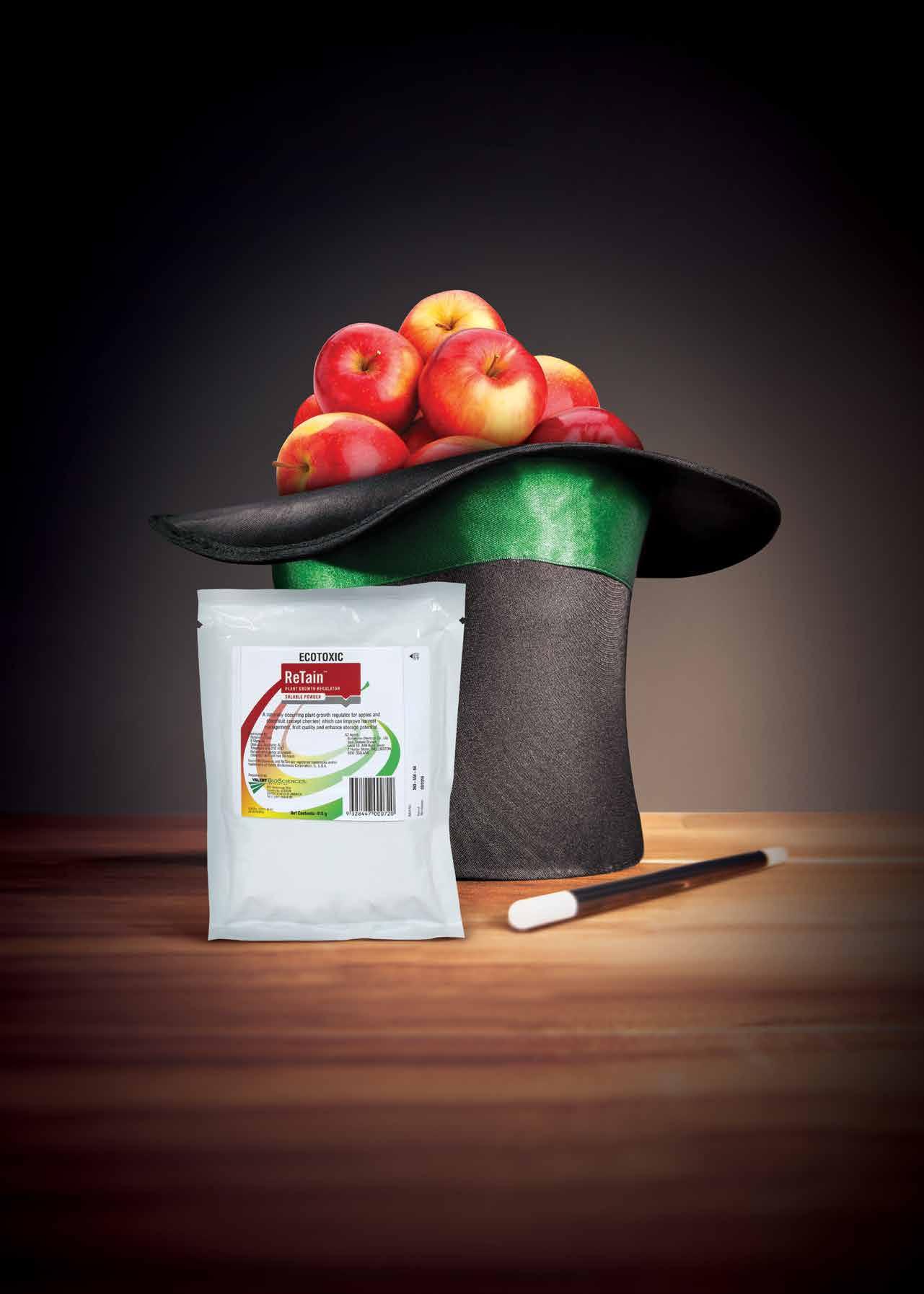
Contact your local Rural Supplier for more information or visit us at nufarm.co.nz/retain
®ReTain is a registered trademark of Valent BioSciences Corporation, IL, USA.
ONF206840NF
Spring snow bites Central’s apricot crop
October brought with it extreme weather, including snow down to low levels across Central Otago, affecting a significant number of apricot crops.
 Aimee Wilson
Aimee Wilson
Cromwell-based orchardist, Simon Webb, says a high exposed block on his property that only had wind machines for protection, received a reasonable percentage of damage, while some of his other blocks still had up to 70 percent of the crop left.
Simon is now faced with being unable to export the fruit this season, as it would be uneconomic.
“We still have the same costs, so you just have to keep going with it,” he says.
Apricots make up 30 percent of his total operation of stonefruit and pipfruit, like many other orchards in the district. Fruit from the trees that still performed well would be made available to the domestic market instead.
The last time a significant snow event occurred in Central Otago so late in the season was in November 2012, second
only to the 18 September snow event in the late 1960s. Earnscleugh orchardist, Harry Roberts, says the 1960s event was the “worst snow event” he can remember, frost fighting for nine days straight using frost pots, with six to eight inches of snow on the ground in the Cromwell Gorge where his brother-in-law was orcharding.
“It was cold. It froze hard for four nights,” Harry says. A special train was even brought up from Dunedin with more diesel for the frost pots.
This recent event had many orchardists in the district frost fighting for three nights, but Harry says the weather forecasts are so accurate nowadays, it was much easier to prepare.
“You just have to be on the ball and experience some of those hard times,” Harry says. “Windmills won’t hack it in the cold air.”
YOUR INDUSTRY 22 The ORCHARDIST : NOVEMBER 2022
October's extreme weather event brought snow down to low levels across Central Otago. Panmure Orchard pictured here on the first night it snowed
Apricots were at a growth stage where young green fruit were exposed to the elements, but Harry says his crop had actually been more affected by hard frosts three weeks prior.
“We’ve had quite a few affected, but we were caught a wee bit back in the bloom.”
Panmure Orchards director, Jeremy Hiscock, says he was “in a state of dumb shock” when the weather event first came through Earncleugh. He thought he was going to lose his entire crop.
The orchard, which is made up of cherries, nectarines and peaches, was white from top to toe, including all of the forks between the branches, with the snow building up on every leaf and petal.
“I have never seen anything like it in my life,” Jeremy says. Halfway through the first snow day, with the sunset and 5cm of fresh snow on the ground and more forecast that night, he thought his orchard was a goner, such was the weight of the snow on the trees in full bloom.
Luckily, the second lot of snow never came, but there was still frost fighting to do for two more nights.
“Twelve hours of frost fighting water with additional snow fall would’ve broken the trees in half. The wind machines were no good because they only work with an inversion layer of warmer air, of which there was none, and we were facing gusts of 25 to 50km. The wind machines were going to destroy themselves,” Jeremy says.
Luckily, it warmed up considerably and they were able to turn on the under-tree sprinkler system to lift block temperatures and get rid of the excess snow.
“All we did is lose a lot of sleep and burn a lot of fuel. When we talked to our neighbours while the snow was falling and settling on the trees and ground, it was a case of, ‘who’s got the longest face’.”
While heavy snow affected the main highway from Alexandra south through to the Teviot Valley, Roxburgh orchardist Gary Bennetts said the temperatures didn’t drop down as low as he would have expected.


“There were definite snow drifts, but the air wasn’t actually that chilled,” Gary says.
He says there was some damage to the young tissue of some of his apricots but that was all.
However, the worst is not over yet. Orchardists are currently checking the damage to the flowers and there is still a chance that crops will be affected by what Jeremy described as “eclectic pollination” rather than fruit frost damage.
“These cold windy days have not been good for business,” Jeremy says. “But we still have fruit.”
Orchardists are now hoping for more rain to make their trees “grow like crazy”, particularly for cherry growers waiting for the shuck split.
Although Panmure Orchards has lost an estimated 15 to 20 percent of its viable flowers on the trees, Jeremy says that doesn’t necessarily mean the orchard has lost 15 to 20 percent of its crop.
“We just don’t know yet. There are still viable crops in the district.”
YOUR INDUSTRY The ORCHARDIST : NOVEMBER 2022 23
Many orchards in the district were frost fighting for three nights
Orchards brave coldest ‘snap’ since records began
Whitehall Fruitpackers was one of the more fortunate orchards to have come out relatively unscathed from October’s polar blast. The orchard is still assessing damage to its crops, but managing director, Mark Gardiner, says preparation, a late season and sheer dumb luck seems to have limited their overall crop loss.
Geoff Lewis
Based in the Waikato, the orchard consists of 30 blocks of kiwifruit totalling 250 canopy hectares. In a usual year, these produce 2.5 million trays of Hayward Green and G3 Zespri SunGold which are processed at its Karapiro packhouse.
While the Waikato gets frosts, and an early chill can be good for kiwifruit bud burst, the 7 October event was the coldest night and early morning experienced in the area since records began in 1972, Mark says. “We didn’t come out unscathed. We have lost a lot of crop.

It was an ‘advective frost’ – [meaning] there is no inversion layer with warmer air on top. We didn’t expect negative three temperatures in October. It caught a lot of growers out.”
Up to that point the season had provided a relatively warm and wet winter and a slow spring with cold patches. A mitigating factor was a late season. Bud burst in the gold kiwifruit variety was only just beginning a couple of weeks late, meaning there wasn’t developing fruit for the ice to destroy.
YOUR INDUSTRY 24 The ORCHARDIST : NOVEMBER 2022
Mark Gardiner inspecting kiwifruit buds for frost damage
While the Antarctic’s icy fingers roused a small squadron of helicopters to help desperate growers, the kiwifruit vines at Whitehall’s home territory were prepared for frost with extensive shelter-belting, 10m swivelling fans and available water. The diesel-powered fans are thermostatically controlled and once the temperature drops below the designated level they jump into action.
Having a good water supply is essential – not just for irrigation but also for frost protection. A fine mist is sprayed over the vines which helps to ensure the temperature does not go below freezing.
“The late-developing season has saved us,” Mark says. “We have a limited amount of water for frost protection, we covered all the gold and half of the green [kiwifruit crop]. Losses vary depending on the variety and its yield.”
With kiwifruit business being so labour intensive, Whitehall employs up to 300 workers in peak season and a core group of casuals.
kiwifruit vines at Whitehall’s home territory were prepared for frost with extensive shelterbelting, 10m swivelling fans and available water


Approximately 90 percent of its production goes to export through Zespri, while the remainder heads to Australia and the local New Zealand market under its in-house Whitehall Fruitpackers brand.

Last year, Whitehall Fruitpackers invested $7 million in automating its packhouse, a move which saw the introduction of optical grading and robotic stacking. There are plans in motion to pack the new red kiwifruit variety in future too.
Mark and his team inspected the damage in mid-October. The crop assessment team were challenged with working their way through each block, assessing what remained viable and which buds were too frost-burned.
Family owned and run, Whitehall Fruitpackers has been operating for more than 45 years, with Robyn and Mark Gardiner and their sons Paul and Ben and daughter Kristin all involved.
Online
Call our experts 0800 130 905 www.irrigationexpress.co.nz
We didn’t expect negative three temperatures in October. It caught a lot of growers out
The
Healthy kiwifruit buds
Views of Whitehall orchard
Frost-burned kiwifruit buds
Orchard Irrigation Supplies
YOUR INDUSTRY The ORCHARDIST : NOVEMBER 2022 25
Using perennial plants to reduce herbicide use

Herbs and forage species have been planted under apple trees in a Nelson orchard to establish if they will out-compete weeds and in doing so, reduce the use of herbicide sprays.
The trial, termed Ground cover plants to replace the weed spray strip, is one of 12 projects to gain funding from the Rural Professionals Fund established in 2020 by the Our Land and Water National Science Challenge to support projects that could lead to significant improvements in farming systems and benefit farming communities.
AgFirst, Willisbrook Orchard, New Zealand Apples & Pears Inc (NZAPI) and Plant & Food Research Ltd in Motueka, are all involved in the trial.
AgFirst Motueka consultant, Aimee Lister, says current orchard practice is to use herbicide sprays in the area under trees, to remove competition for nutrients and water from unwanted ‘weed’ plants.
“This has been a reliable and cost-effective management practice, but leaves the ground bare, susceptible to erosion and with overall reduced soil health,” Aimee says. “Some chemicals have also been found to harm pipfruit trees. This project aims to contribute knowledge to the goal of eliminating the need for herbicides in future.”
The industry has a goal of significantly reducing chemical use by 2050.
“That date is just a target and it is important to look for alternative effective management practices, now,” Aimee says.
The trial began in October on Willisbrook Orchard at Brightwater when seed beds were established and seven
Elaine Fisher
YOUR INDUSTRY 26 The ORCHARDIST : NOVEMBER 2022
Sheep’s burnet is a deep-rooted perennial herb
1 Alyssum is a compact perennial flowering plant 2 Chicory is a hardy perennial 3 Plantain is a herb with a fibrous and coarse root system 4 Bird’s-foot-trefoil is a member of the pea family 5 Strawberry clover is a perennial clover that performs well in hostile conditions 6 Common yarrow is a flowering, low growing plant

different seed species planted under two rows of apple trees – each row 100 metres long.
The advent of new age canopy systems with trees growing in a 2D configuration, as opposed to traditional vase shaped trees, means more light now reaches orchard floors, making it easier for weeds to grow but also for species used in the trial to become established.











“We selected plant species which were deemed to have the best attributes, including that the seeds were readily
available, they were low growing, spread easily and were perennial,” says Aimee. “We planted each species separately because we wanted to be able to measure how each performed and how they interacted with the soil and trees.”
The species selected are sheep’s burnet, a deep-rooted perennial herb; bird’s-foot-trefoil, a member of the pea family; plantain, a herb with a fibrous and coarse root system; strawberry clover, a perennial clover that performs well in hostile conditions; alyssum, a compact perennial



As we all know, in the fruit growing industry ultimately everything stems from a twig. We have alliances with some of the world’s best new fruit variety developers and rootstock breeding programmes. These relationships and our continual search for the best cultivars puts us at the forefront of global variety and rootstock development in New Zealand.
Our unique capability across a wide variety of crops and our focus on matching varieties and rootstocks to conditions allows us to offer real, informed advice. Call:
Kate Marshall, 0274 201 033, kate@waimeanurseries.co.nz
Jeff Sandford, 0274 201 003, jeff@waimeanurseries.co.nz
www.waimeanurseries.co.nz
In our world of twigs and roots pedigree is everything.
1 4 2 5 3 6 YOUR INDUSTRY The ORCHARDIST : NOVEMBER 2022 27
flowering plant; chicory, a hardy perennial; and common yarrow, a flowering, low-growing plant.
Nine months is a short timeframe for the trial, but Aimee says it is hoped enough information can be gained to establish if all, or some of the plants, effectively outcompete weeds – reducing the need for sprays without having any detrimental effects on the trees and the fruit they produce.
“We have the support of NZ Apples and Pears Inc (NZAPI) and Rebecca Campbell from Plant & Food Research Ltd who will help with gathering the scientific information needed to understand the species which perform best,” Aimee says.
The research will include sampling leaves and fruit, both from fresh fruit and stored fruit, to find out if the ground cover plants compete for nutrients with the trees, and if there are any implications for increased pest and disease pressures.
Soil samples were taken before the trial began and sampling will be continued throughout the trial period to find out if there are any differences in soil microbiology. Control samples will also be taken from trees and from the soil of orchard rows managed under the traditional weed spray strip system.
The project met with a few initial challenges, including finding machinery to prepare seed beds and plant the seeds.
“We were able to find a vineyard contractor who had a machine which could prepare the seed bed between the trees, but there is very little orchard equipment capable of working under apple or pear trees,” says Aimee. “However, if the trial is successful and the concept widely adopted, then the equipment needed to prepare the seed bed and plant the seeds will no doubt emerge.”
While the focus is to control weeds under trees, the trial will also monitor how the ground cover reduces soil erosion – which will be particularly relevant for orchards on hillsides.

“There has been quite a lot of interest in the trial from the industry and we will be keeping growers up to date with its progress through regular NZAPI field days,” says Aimee.
The trial fits well with AgFirst’s vision to enhance sustainability within its own business and that of its clients, Aimee says.
“The ideal result of the trial would be that at least a couple of the plant species do well and quickly establish ground cover which excludes weeds, but does not compete too much with the pipfruit.
“If we can prove the use of ground cover species works, the practice is easy and cheap to use, without creating additional labour costs, and it reduces expenditure on herbicides, then ultimately we would like to see the practice more widely adopted within the industry.”
A typical weed spray strip in a 2D apple orchard
YOUR INDUSTRY 28 The ORCHARDIST : NOVEMBER 2022
The trial began in October on Willisbrook Orchard at Brightwater


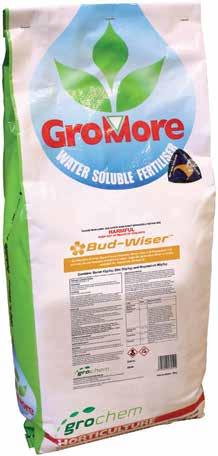



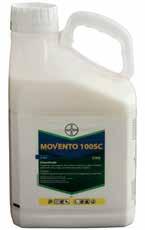

















Get your key horticulture inputs at Farmlands for BIG chances to win. Purchase
Exclusive to Farmlands shareholders. *Terms and Conditions apply. Visit farmlands.co.nz/Help/WebsiteTerms/ for full terms. Promotion is only open to Farmlands shareholders. Qualifying products include: Bayer Movento 100SC Insecticide, Adama Merpan 80 Fungicide, Grochem Norshield 45WG, Stimplex Organic Fertiliser, Grochem Bud Wiser, Biolchim Folicist, Grochem Savvy 500 SC, Syngenta Actigard™ Plant Activator. HEAD INTO YOUR LOCAL FARMLANDS BRANCH OR TALK TO YOUR TA TODAY. Farmlands is proud to support NZ Horticulture $10K FROM SELECTED FARMLANDS CARD PARTNERS TO BE WON* WORTH OF VOUCHERS
any qualifying Horticulture product from Farmlands between 1 October 2022 and 31 December 2022 and automatically enter the draw to win $5,000 worth of vouchers from the following Farmlands Card Partners, House of Travel, Hunting & Fishing™, Noel Leeming, Mitre 10 Mega and Stihl Shop. The more you buy the more chances to win. There are two voucher prizes to be won, each valued at $5,000 – one to be won in the North Island and one for the South Island.
The 2023 competition will celebrate Māori excellence in horticulture for the second time
Ahuwhenua enters 90th year of competition
The Ahuwhenua Trophy – Excellence in Māori Farming Awards celebrate excellence in the dairy, sheep and beef, and horticulture sectors on a rotational, three-year basis.

Supplied Photographs: Alphapix
The Ahuwhenua Trophy, now entering its 90th year, was first awarded by Tā Āpirana Ngata and Lord Bledisloe in 1933 and has remained hugely prestigious ever since. The inaugural Ahuwhenua Horticulture Trophy was awarded in 2020, and the 2023 competition will see Māori excellence in horticulture celebrated for the second time.
We had the privilege of speaking with the 2020 Ahuwhenua Horticulture Trophy finalists to find out how the Ahuwhenua competition supported their businesses and communities. With the backdrop of COVID-19 and the uncertainty that lockdowns brought to the well-being of communities, 2020 presented its unique challenges for the competition. The lockdowns not only impacted the
hosting of Ahuwhenua ‘field days’, a highly anticipated component of the competition, they also delayed judging. Nonetheless, the competition forged ahead, and the judges were able to visit all three orchards and meet the trustees at each.
All finalists are strictly judged on eight key criteria:
• Governance and strategy
• Social/community Ngā Tikanga Māori
• Commitment to sustainability and the environment
• Kaitiakitanga (guardianship)
• Finances and benchmarking
• Customer focus
• Human resources and health and safety
• Innovation
YOUR INDUSTRY 30 The ORCHARDIST : NOVEMBER 2022
HINEORA ORCHARD –TE KAHA | WINNERS OF THE 2020 INAUGURAL AHUWHENUA HORTICULTURE TROPHY


We met with Norm Carter, Chairman of Te Kaha 15B Trust, the Trust responsible for Hineora Orchard, for a kōrero. Hineora Orchard is a Māori freehold land block located in Te Kaha in the Te-Whānau-aApānui rohe (region) of the Eastern Bay of Plenty. The total block is 11.78 hectares, and its primary operation is 8.13 hectares of SunGold kiwifruit. Te Kaha 15B is one of six Trusts in Te-Whānau-aApanui working collectively to enhance and grow their economic assets to give back to owners and their community. This has seen over 20 years of investment in kiwifruit.
There was a large amount of information to be collated for the competition and at times, Norm reports wanting to “give up”. However, the Trust persevered with the competition, which they then went on to win. Upon reflection, Norm believed it “helped them to strengthen their knowledge of their business operations and helped strengthen their overall strategy.” “A highlight was winning the competition and the opportunity for the shareholders and community to come together at the function and celebrate success for Māori in horticulture”, said Norm.
OTAMA MARERE –PAENGAROA | FINALIST
We also met with Homman Tapsell, Trustee of Otama Marere Trust, who was proud of the achievement and recognition of the work achieved by the collective trustees, and proud to tell the story of Otama Marere.
Otama Marere orchard is located in Paengaroa in the Bay of Plenty rohe (region). The total land area is 45.01 hectares of predominantly flat land. As well as its kiwifruit operation, lower, wetter parts of the block have also been planted in wetlands. The orchard area is made up of:
• 11.87 hectares of Green kiwifruit
• 2.21 hectares of SunGold kiwifruit
• 7.08 hectares of Organic SunGold kiwifruit
• 2.10 hectares of GEM Avocados
Homman believes the competition is “a good representation for Māori growers, a great way to get whānau involved in the process, and a useful tool for succession planning.” A key takeaway for Homman and his trustees was being able to collectively refine their operation by identifying different parts of the whenua and its rich history.
“The Ahuwhenua competition helped us with our whakapapa connection to the orchard”, said Homman.
The Ahuwhenua competition helped us with our whakapapa connection to the orchard
Norm Carter and Akura Brown accepting the 2020 Ahuwhenua Horticulture Trophy on behalf of Hineora Orchard
Hon. Nanaia Mahuta with Otama Marere Trust at the finalist announcement in Wellington
YOUR INDUSTRY The ORCHARDIST : NOVEMBER 2022 31
Ngāi Tukairangi Trust at the 2020 Ahuwhenua field day they hosted on their orchards
NGĀI TUKAIRANGI TRUST – MATAPIHI
| FINALIST
We also met with Riri Ellis, Chief Executive Officer of Ngai Tukairangi Trust, to hear about their Trust’s experience of participating in the 2020 competition. Ngāi Tukairangi Trust is located on the Matapihi peninsula of Tauranga Moana. The trust has several kiwifruit operations:

• 36.1 hectares SunGold
• 12.70 hectares of Green Kiwifruit
• 6.90 hectares non producing SunGold and a trial kiwifruit variety
• 60.0 hectares SunGold in Hawke’s Bay
Riri said “The competition process was challenging and required time and resources. However, the field day was a great success, and a key highlight of the overall competition was the bringing together of whānau and creating that cultural connection for all who attended. The footage created by the Ahuwhenua committee was superb too, and will be kept as a taonga (treasure) for our whānau.”
A key highlight of the overall competition was the bringing together of whānau and creating that cultural connection for all who attended
Maatutaera Akonga accepting the 2020 Ahuwhenua Horticulture Young Grower Trophy
MAATUTAERA AKONGA – YOUNG GROWER
HORTICULTURE
WINNER 2020
Maatutaera Akonga from Hawke’s Bay won the inaugural Ahuwhenua Young Māori Grower Award for 2020. Maatutaera is the Senior Leading Hand at Llewellyn Horticulture, and manages 80 hectares of apples.

Maatutaera is the Senior Leading Hand at Llewellyn Horticulture, and manages 80 hectares of apples

YOUR INDUSTRY 32 The ORCHARDIST : NOVEMBER 2022
To produce wonderful Pip fruit, it pays to start early with Altacor ® insecticide.
• Target the first spray after Codling moth egg lay to get on top of the problem before it gets on top of you.
• Controls multiple stages of Codling moth, preventing damage to your fruit.
• Altacor ® is friendly to your key beneficials making it the ideal partner for IPM and mating distribution.
So this season, aim for beautiful fruit with Altacor ® . Visit www.fmccrop.nz for more information.

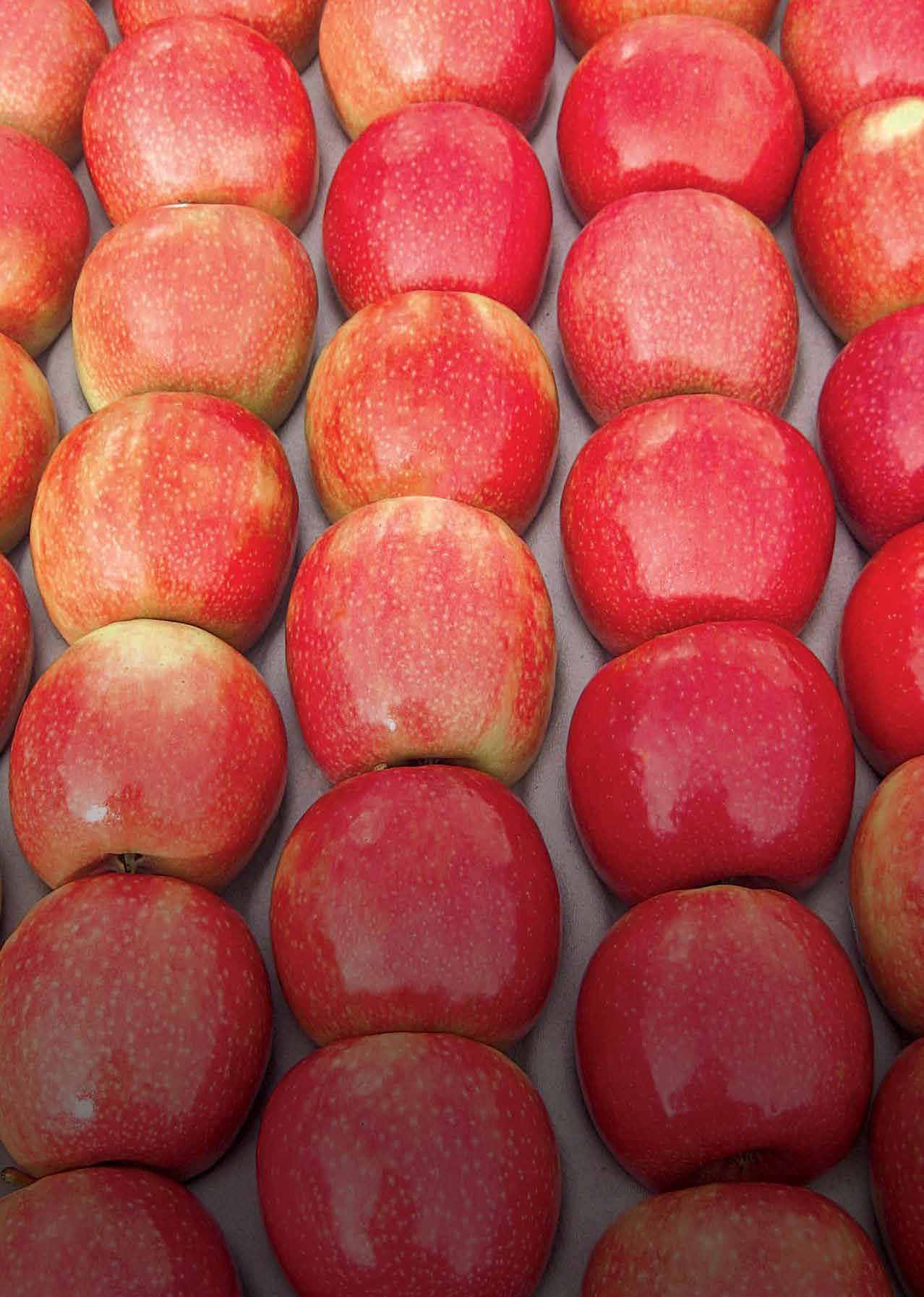
Realise the
Spray
Limited
ALWAYS READ AND FOLLOW LABEL DIRECTIONS. Copyright © 2018. All rights reserved. Altacor® is a registered trademark of FMC Corporation or its affiliates.
difference.
early. FMC New Zealand
Phone: 0800 658 080 www.fmccrop.nz
Institute innovations bring $46 million economic benefit
In the five years since it was established, independent research institute PlantTech has developed innovations for the horticulture industry which could result in a $46 million boost to the national economy.
Elaine Fisher
A report by the New Zealand Institute of Economic Research (NZIER) – The economic impact of PlantTech – found that PlantTech’s research and innovation could lead to the creation of 440 new jobs in the Bay of Plenty region over ten years.

PlantTech chief executive, Dr Mark Begbie, says the report shows that the institute is clearly delivering against challenges it was asked to address when it received $7.4 million in government funding as part of an initiative to
establish regional research institutes throughout the country.
“The independent report says we have delivered around a six times multiplier in economic impact on the government investment, which included our set-up costs and getting our team in place,” Mark says.
“Our argument to government now is that we are showing exceptional performance with very strong indications that PlantTech has the ability to really make an impact in this space.”
YOUR INDUSTRY 34 The ORCHARDIST : NOVEMBER 2022
PlantTech research director, Ian Yule, with research scientist, Istvan Hajdu, measuring avocado fruit
The idea behind PlantTech was to create a research and technology organisation (RTO) based on delivering high-value crop systems using artificial intelligence (AI) and machine learning (ML). The organisation has now established credibility and acceptance within the science system.
The NZIER report bases its estimations on benefits PlantTech has achieved in its brief period of operation. Its kiwifruit crop estimation is predicted to return one to two


percent of total turnover to growers within the first three years. This is significant enough to use an economy-wide model to illustrate the impacts on a regional and national level, the report says.
Another project with economic impact involved PlantTech working on improving soil quality by developing a testing approach that Eurofins (a science laboratory company) could apply to develop a faster, less expensive and lower waste commercial product through its network.
YOUR INDUSTRY The ORCHARDIST : NOVEMBER 2022 35
A PlantTech apple crop imagery trial involves counting and photographing thousands of apples in marked grids
Some kiwifruit experience a temperature bounce once they enter the coolstore and this has a detrimental impact on the quality of the fruit and increases waste along the supply chain. It is a $100 million per annum problem for Zespri and contributes to climate change from rotting fruit. PlantTech has developed a model that predicts temperature bounces, which Zespri is now incorporating into its IT system to enable prompt action when bounces occur.
Development of tests for water stress and nitrogen deficiency, which use satellite data to monitor at the regional scale down to individual orchard bay resolution, will also benefit orchardists as they become more reliant on off-orchard tools to improve productivity and respond to the challenges of climate change on their orchard.
The NZEIR report says there are also macro benefits that PlantTech’s precision agricultural tools provide, which includes helping to meet the challenge of supplying the Asian middle classes with temperate zone fruit (for which demand is expected to double by 2050).
Mitigating the worst impacts of climate change and decarbonising orchards and supply chains is another aspect of the institute’s work.
To underline the breadth of PlantTech’s scope and to better reflect the growing demand for its services, Mark says the institute has changed its status to a not-for-profit incorporated society.

“As we enter a new phase, our focus will be on cementing
the capabilities we have established, scaling our capacity to deliver from these, and delivering substantial value while serving a wider and somewhat more diverse demographic,” says Mark.
“PlantTech has grown beyond the Bay of Plenty, has moved into new crops, and is working with significant corporates and crown research institutes (CRIs), complementing their strengths with ours and accelerating the transition of technology into commercialisation.
“Quite simply, we exist to help businesses in the primary sector thrive. Not by developing competing products or doing research for research’s sake, but by stretching the innovation goals of the businesses themselves, challenging the industry, delivering tools, research and development, supporting skills increase and practical solutions that are all demand driven and relevant right now,” Mark says.
PlantTech is moving away from the traditional curiosity driven, project specific, or field experimentation approach where the results are extrapolated to the rest of the industry, to a more data science driven approach that gathers data and finds practical solutions to commercial problems through research and analysis.
Our research agenda is informed by industry, and our goal is to find answers to industry problems
YOUR INDUSTRY 36 The ORCHARDIST : NOVEMBER 2022
Ian Yule and PlantTech chief executive, Mark Begbie (right)
“We differ from other research providers,” says PlantTech research director, Ian Yule. “We are much more closely aligned to industry. Our research agenda is informed by industry, and our goal is to find answers to industry problems. “We have had to work to get our message across about who we are and what we do and why we are different from other groups, and that we are not here to compete with existing structures.”
Recent highlights for PlantTech include the opening of a satellite office in Palmerston North so PlantTech’s team of research scientists can be closer to the Manawatu agritech research hub and pipfruit industry. This is already paying dividends as work is underway on a digital apple crop estimation project in Hawke’s Bay, working with Envy,

Jazz and Rockit™ apple varieties. Part of the project will assess how effective image-based tools can be in the orchard to find how many apples are in full view of the camera, for example, how many are hidden behind leaves, how many apples can be counted, what is the accuracy of apple size or weight prediction from the images.

“Part of PlantTech’s research strategy is keeping ahead of trends to predict and respond to future challenges,” says Plant Tech research scientist and project lead Henry Kirkwood. “This necessitates gathering data from across the industry which can be extracted and analysed to be transferred into different strategies and commercial ready projects.”
 PlantTech's apple crop estimation research uses machine readable codes to assist in large scale data collection
PlantTech's apple crop estimation research uses machine readable codes to assist in large scale data collection
PRECISION FARMING = INFORMED DECISIONS = BETTER RESULTS CROP PERFORMANCE FUELLED BY SCIENCE AND TECHNOLOGY www.agritechnovation.co.nz Bringing AT-ness to every Farmer | MYSOIL CLASSIFICATIONTM can identify the following: • Limiting layers • Leaching zones • Drainage depths and directions • Soil types for irrigation decisions • Depths and directions for drainage decisions • Representative soil moisture probe positions, to better manage irrigation zones • Possible cultivation actions to improve crop performance Know your soil’s status, contact your nearest Agri Technovation specialist at 09 954 5411 YOUR INDUSTRY The ORCHARDIST : NOVEMBER 2022 37
Ripe for the picking: Twenty years of research culminates in three new apricot varieties
After more than 20 years of research and assessing thousands of apricots, Plant & Food Research Ltd (PFR) New Zealand might have hit the jackpot, with a new suite of apricot varieties.

AIMEE WILSON reports on the journey from orchard to lab.
The New Zealand apricot industry had been looking for new varieties with flavour, good texture, a good appearance and the resilience to travel to overseas markets. An encounter with a late sport of Moorpark down in the Teviot Valley was just the beginning of a long process of developing and commercialising new apricot varieties with these desired attributes.
Arlene Nixon, a Clyde-based research technologist for PFR, is passionate about combining her love of science, art and observing nature. Like anybody, she also appreciates good tasting fruit. Her background in breeding dairy cattle
and bloodstock, plus a few years in the apricot lab, gave her the opportunity to work with Mike Malone in the PFR apricot breeding programme which began in 1999.
“At that time there [were] only a few apricot blocks at Clyde; a collection of early introductions into New Zealand, the Clutha series, and a disappointing block of late Trevatt cross [varieties],” Arlene says. “I saw this as a great opportunity to get stuck in and make some crosses using commercially viable parents to see if we couldn’t make some improvements to currently grown [apricot] varieties.”
Arlene was soon swept up in the process.
FEATURE ARTICLE YOUR INDUSTRY 38 The ORCHARDIST : NOVEMBER 2022
Research associate Arlene Nixon among the blossom in Earnscleugh
“Seeing the first fruit in the seedling rows is a high point in the season,” she says.
Visits to Clyde by growers, industry leaders and overseas buyers of stonefruit gave Arlene a long list of what she needed to keep in mind when developing a new apricot variety – beginning with firm, late apricots with great flavour, good texture and a blush of red colour. A trip to the Craig family’s orchard at Coal Creek Gardens, currently run by Bill Craig, in the Teviot Valley near Roxburgh was a key next step.
Bill’s father, Andrew, had noticed a branch on one of his Moorpark trees with fruit hanging on it much later than the rest of the tree. He took the initiative to have several trees budded from the branch and then decided it could be of use to the stonefruit industry, offering it to PFR (then HortResearch) for the apricot breeding programme.
“We owe a massive debt of gratitude to the Craig family,” says Arlene, who used the ‘Craig’s Late’ to breed a whole new series of late apricots. “I was very excited to be offered access to the tree. I recall I asked for some blossom as it was spring, and also a promise of a return visit to collect budwood. I used the pollen from those blossoms for some first crosses and got a row of fifty trees.”
Most of the resulting trees had Moorpark attributes that would keep them from being export apricots, but on one tree the fruit was clean, firm and even later than its parent. This tree became the parent, or grandparent, of many of the thousands of seedlings grown at Clyde.

Arlene named the tree St Bathans 14/15 – after the Central Otago mountain range. All of the blocks developed by Arlene are now named after local mountain ranges.
“It is relatively easy to get some of the sought after characteristics; the challenge for breeders is to get as many attributes as possible into one fruit,” Arlene says. “Add to that the desire to have a series of similar trees fruiting over the entire extended season and you’ve got a serious challenge guaranteed to keep you, and the next breeder, busy for many years.”
At the peak of the apricot breeding programme there were 15,000 seedlings growing at PFR’s Clyde site.

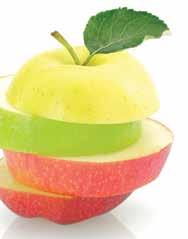
The second stage of the process is led by the Clyde PFR fruit physiology team, made up of scientist Dr Jill Stanley and research associates Claire Scofield and Michelle Schurmann.
Countless other staff, including previous research associates Shayna Ward and Ross Marshall, summer students and casual workers have put a significant number of hours and hard work into getting these new cultivars out to the commercialisation stage over the last decade.
There has also been significant input from growers and teams from other PFR research sites around the country, with post-harvest teams in Auckland and Hawke’s Bay, pollination teams in Ruakura, sensory and consumer evaluation teams in Auckland and the plant varieties team in Hawke’s Bay and Lincoln.

The physiology team received recommendations of suitable candidates from the breeding team and these were then grafted onto rootstock in small numbers for further evaluation. A work plan for evaluation was then agreed with Summerfruit NZ (SNZ), including the number of selections to be evaluated in each year.
“The initial look at the selections is brief as there may be ten-plus selections to work through,” research associate, Claire Scofield, says.
Candidates are evaluated for potential storage length and any disorders, as well as on-tree characteristics such as yield before reaching the ‘elite selection’ stage.
“This is when we carry out more detailed assessments, including on-tree performance, pollination and fruit set, harvest criteria, multiple storage timings and shelf-life performance,” Claire says. “We may organise other specific trials, such as crop loading, large consumer evaluations, export simulations and grading performance.
“A selection has to have characteristics that suit the grower – for example, easy to grow, no major pest or disease issues, consistent yields and good pack-outs – as well as excellent fruit quality that will appeal to consumers.”
Larger numbers of trees are often used at this stage and trials are established with growers. The whole process takes upwards of ten or more years from breeding to commercialisation.
Est 1956 L.E. Cooke Nurseryman Ltd Ltd L.E. Cooke Nurseryman Growers of high quality fruit trees your fruit tree Try us first for requirements! Marty & Kelli Cooke 75 York Road, Longlands, Hastings, 4120 PH: 06 870 7043 EMAIL: lecooke@xtra.co.nz CELL: 0274 396 205 (Marty) Proudly serving the fruit industry for 66 years •Pears •Plums •Apples •Apricots •Cherries •Peaches •Nectarines www.lecooke.co.nz
Seeing the first fruit in the seedling rows is a high point in the season
YOUR INDUSTRY The ORCHARDIST : NOVEMBER 2022 39
“Roughly only 10 percent of the selections identified as having potential at the seedling stage will make it through to elite selection stage, and then fewer again will make it as a commercial cultivar after rigorous testing for growing, right through an entire supply chain,” Claire says. “So having three cultivars be released is a testament to how well these performed.”
More than 20 Central Otago and North Island orchardists are part of the new apricot era, with 44,000 to 45,000 trees spanning 44 to 46 hectares planted in the three new varieties – NZsummer2, 3 and 4. Two more are currently being grown under PFR trial agreements.
The new varieties were handed over to the newly established NZ Summer Fresh company for commercialisation.
We want fruit that is robust and copes with packing and transport and still delivers an amazing eating experience for the consumer
NZ Summer Fresh Ltd incorporated in June 2021 and will transition to a grower cooperative to commercialise the varieties for export and domestic markets from late summer 2022–2023.
The growers involved in NZ Summer Fresh Ltd are a combination of long-standing summerfruit producers and newer growers, that will grow the varieties under license as approved shareholders in the cooperative.
NZ Summer Fresh chair, Stephen Darling, says the varieties have the potential to revitalise and relaunch the premium apricot category internationally.
“But we don’t actually know until we get them to market how they’re going to perform,” he says.
According to Stephen, apricot growers are looking for new varieties that crop consistently and withstand the extremes of early spring weather that we contend with.


“We want fruit that is robust and copes with packing and transport and still delivers an amazing eating experience for the consumer,” Stephen says. “Early indications from trial plantings are promising, however there is still further
HOW THE PROCESS HAPPENS
In late winter, branches from prospective pollen parents are brought into the lab to force the apricot bloom. The opening bloom is combed to collect the anthers, which then release their pollen. This is dried and stored in small vials.
Once the mother trees are starting to flower in the field, the unopened bloom is hand pollinated with the collected pollen. The tree is covered with a plastic tent to protect the growing embryos from frost. Three to five thousand crosses were completed each year at PFR’s Clyde facility.
Stones are collected from the ripened fruit, the seeds extracted and then stratified in Hawke’s Bay. Stratification involves exposing the seeds to the temperature and humidity required to break dormancy so that they germinate. The resulting trees are grown to about 30 centimetres at which point they are sent back to Clyde for planting.
The trees fruit in their second or third year and each are unique in their root systems, so harvest dates and fruit quality vary wildly. The seedling blocks are walked twice weekly to assess both fruit and tree. Samples and notes are taken and decisions made to bud the standouts onto GQ (Golden Queen) rootstocks for further trial and potential plant variety rights observations.
One of the new varieties developed by PFR – a NZsummer2 apricot
YOUR INDUSTRY 40 The ORCHARDIST : NOVEMBER 2022
Arlene Nixon works on an apricot blossom
END OF AN ERA FOR FRUIT BREEDING EXPERT

Plant & Food Research Ltd technologist, Arlene Nixon, is retiring from her job breeding fruit after more than 23 years in the industry.
Originally from Canada, Arlene moved to New Zealand in 1992 after studying biology at the Simon Fraser University in Vancouver, alongside a degree in ski mountaineering.

Multitalented, Arlene initially worked in the fields of veterinary medicine and embryo transfer which gave her a foothold into New Zealand, initially surgically implanting sheep in her job with the Ministry of Agriculture and Fisheries (MAF) – now the Ministry for Primary Industries (MPI).

“I’ve really enjoyed the brilliant people I’ve worked with over the years,” Arlene says. “I’ve also loved the field work side of my job. You really can’t beat being out amongst your trees, tasting exquisite, tree-ripened apricots. “A really good one is like all of summer distilled into a single piece of fruit.”


She says one of the great things about breeding is the never-ending set of challenges.
“You’re never really breeding for today; you should be thinking about changing climate, new markets or changes in consumer demands, resistance to pests and disease and trees suited to new growing and harvesting systems,” Arlene says. “If I was to start all over, I’d hope the programme could stretch to include dwarfing [apricot varieties], drought tolerant [varieties], rootstocks and disease resistance as well as fruit that meet market demands.”
Although Arlene will be taking a step back from the research and science scene, she says she still looks forward to seeing PFR and NZ Summer Fresh Ltd release more apricots from the programme.
“I’d love to see a whole new generation of apricot-loving consumers who have never had a bad fruit buying experience. I think we can lift the game health and nutrition wise, at the same time as increasing profits for growers. That’s always been the goal.”
To complete maintenance and repairs on your irrigation and fencing systems this season, visit your local Fruitfed Supplies store. KEEP YOUR ORCHARD RUNNING EFFICIENTLY Find your local Fruitfed Supplies store online www.fruitfedsupplies.co.nz YOUR INDUSTRY The ORCHARDIST : NOVEMBER 2022 41
Fruit flies continue to be one of the biggest biosecurity threats facing horticulture
Fight against fruit fly strengthened through biosecurity partnership

A ground-breaking agreement to fight the threat of fruit fly has been renewed and updated by government and eight of New Zealand’s largest horticulture industry groups.
Supplied
The Fruit Fly Operational Agreement, first signed in May 2016, was the first such agreement under the Government Industry Agreement for Biosecurity Readiness and Response (GIA). The agreement sets out the operational requirements for biosecurity readiness and response, as well as cost sharing between the government and affected industries. Its renewal enhances New Zealand’s protection from the threat of fruit flies arriving and ensures that as a country we are wellprepared in the event that a response is required, as happened with the large Auckland Fruit Fly response in 2019.
Fruit Fly Council chair, Matt Dyck, says the parties are very pleased to have finalised the new agreement after a period of re-negotiation and review.
“Renewing the Fruit Fly Operational Agreement illustrates the success of the partnership and will enable Biosecurity New Zealand and the horticulture sector to build on the strong foundations now in place to continue working together to manage and help reduce the impacts of fruit fly on New Zealand,” says Matt.
“Fruit flies continue to be one of the biggest biosecurity threats facing horticulture. An unmanaged fruit fly
YOUR INDUSTRY 42 The ORCHARDIST : NOVEMBER 2022
incursion would cost the horticulture industry billions of dollars, and would have significant negative impacts on the economy, the community and New Zealand’s trade relationships. By working together under GIA, government and affected industries have achieved far more than would have been possible working in isolation from each other. By harnessing the collective strengths and experiences of all the affected horticulture sectors, along with the national responsibilities of the government we have created a strong, cohesive partnership that is delivering excellent outcomes for all New Zealanders,” Matt commented.
The new agreement took effect from 1 September 2022 and has a seven-year term. It sets out the outcomes sought by the parties in reducing the threat of fruit flies to New Zealand, and the roles and responsibilities of each of the signatories.

The agreement provides for shared biosecurity readiness activities across all fruit fly species, covers responses and allocates cost shares for the three species of fruit fly expected to have the broadest impact should they establish in New Zealand (Queensland Fruit Fly, Mediterranean Fruit Fly and Oriental fruit fly). The agreement provides the flexibility to enable response activities to get underway rapidly if fruit flies are found, irrespective of the species and the horticultural sectors impacted.
“New Zealand’s partnership between government and primary sector industries for managing biosecurity readiness and response is world leading,” Matt concluded; “the renewal of the Fruit Fly Operational Agreement confirms the commitment of all parties to working together under GIA and ensures that New Zealand is well placed to fight the threat of fruit fly.”
Signatory Representing
Ministry for Primary Industries NZ Government
Kiwifruit Vine Health Incorporated Kiwifruit, including Kiwiberry growers
NZ Apples & Pears Incorporated
NZ Avocado Growers’ Association Incorporated
Pipfruit sector growing fresh pipfruit for consumption, including the nashi sector
Commercial avocado growers
New Zealand Citrus Growers Incorporated Fresh citrus fruit growers
Tomatoes New Zealand Incorporated
Vegetables New Zealand Incorporated
Commercial fresh tomato growers
Commercial fresh vegetable growers
Summerfruit New Zealand Incorporated Commercial summerfruit growers
Horticulture New Zealand Process Vegetables NZ grower members
The future of fertiliser

More yield, less disease, better shelf life.
Levity Crop Science now available in New Zealand.

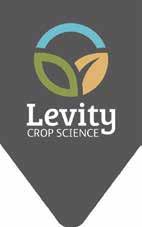
Dr David Marks – well published plant physiologist –has created the future of smart fertilisers.
Using knowledge of plant issues and inventing new compounds to influence mobilisation, Levity Crop Science have changed the way we look at Nitrogen and Calcium.







Scan the QR codes to see how we can help your crop issue:


Lono
Root development and growth partitioning, increased yield
Albina
Increased Calcium uptake, better fruit retention

Sulis Colour and Brix, shelf life
Damu Boron and Molybdenum

Zeme
Silicon for reducing disease and susceptibility
Indra
Antioxidants reducing stress, higher resilience to salinity, drought, heat, wet
Levitycropscience.com
Contact Michelle Osgood Seed & Field Services SI Ltd
Ph 021330676
Signatories to the Fruit Fly Operational Agreement:
YOUR INDUSTRY The ORCHARDIST : NOVEMBER 2022 43
Delivering farm-fresh to consumers’ tables
Just four months on from the official opening of Countdown’s Auckland Fresh Distribution Centre and the facility is already delivering fresh produce to 152 stores across the North Island.
HELENA O’NEILL checks in with supply chain manager, Sean Severin, to find out how the new centre ensures growers’ produce hits consumers’ tables in top-notch condition.
It’s been a busy year for Countdown. In May 2022, Woolworths NZ joined the Woolworths Group Supply Chain and rebranded to become Primary Connect – an end-to-end supply chain partner within Woolworths Group.
It’s one of New Zealand’s largest retail supply chains, supporting businesses within Woolworths NZ (Countdown, SuperValue and FreshChoice). Primary Connect New Zealand manages the transport of freight into Countdown’s distribution centres and any other location around New Zealand.
Officially opened in July, Countdown’s new Auckland Fresh Distribution Centre (AFDC) located in Wiri covers a whopping 20,000 square metres and has state-of-the-

art systems in place to ensure all produce is delivered promptly and in premium condition.
Primary Connect AFDC supply chain manager, Sean Severin, says the $150 million facility handles between 30,000 to 40,000 cartons a day.
“Some product is held for a day, and that’s as long as we would hold it,” Sean says. “The product comes in via the grower’s delivery, it’s receipted in the morning, we check it and do a quality inspection on it and then we put it away. From there we do our selection process through the night.”
Staff deliver produce to 152 stores across the North Island seven days a week, 363 days year.
FEATURE ARTICLE
Loads are consolidated at the new distribution centre at Wiri, South Auckland
YOUR INDUSTRY 44 The ORCHARDIST : NOVEMBER 2022
The solar generation at the AFDC alone is expected to offset approximately 183 tonnes of CO2 per year
“We get our quiet time in the morning when we’re basically just receiving,” Sean says. “When the selection starts up, then all the machines are running, people are picking at pace, we’re consolidating, wrapping, reloading vehicles and dispatching vehicles all throughout the night.”
The new temperature-controlled building is chilled in different zones for optimum storage conditions of different produce types, and centralises Countdown’s fresh product operations.
“We bring in between 50 to 70 loads of products every day from a myriad of different vendors [growers] and transporters,” Sean says. “We have ripening capabilities that have yet to be commissioned but they will be operational by next year. We’re also hard linked via an air bridge to the Hilton Foods plant next door, [where] we consolidate the meat and produce together in single loads and dispatch that overnight as well. It’s part of optimising the use of our transport network.”
The Wiri location is ideal, Sean says, as the site is close to the main highways meaning ease of distribution, although the bulk of their stores are around Auckland.
Countdown’s sustainability commitments include zero food waste to landfill from stores by 2025, a minimum 5 Green Star rating on all new buildings by 2025 and a 63 percent reduction in emissions by 2030 from a 2015 baseline. Green Star certification is a formal process managed by New Zealand Green Building Council, during which a building, fit out, or precinct is awarded a rating by an independent, third-party assessor.
“This is a 4 Green Star rated site,” Sean says. “It’s the only warehouse that we know of that has been designed to this level.
“We have reusable rainwater for all our greywater and all energy-efficient lighting is on sensors. We utilise solar power and our refrigeration system is at a fraction of what traditional refrigeration in a facility of this nature actually spits out.”
The solar generation at the AFDC alone is expected to offset approximately 183 tonnes of CO2 per year.
The site also has dedicated bays for electric vehicle charging, Sean says.
On the health and safety side of things, the AFDC utilises a global wheel-lock restraint which automatically engages the rear tyre of the truck or trailer with a barrier and it cannot move away until released from inside the dock area. Designed to stop dock accidents, these wheel locks prevent the dangerous creeping and premature departure of vehicles during the loading and unloading of trucks and trailers.
Sean says the biggest challenge in launching the new centre was getting all staff trained and skilled and the facility operational.
“The vast majority of the team that joined us were fresh… they had to be freshly trained in how to work within a distribution centre,” Sean says. “They had to learn the various systems, processes, the procedures. After the induction period, we trained them for a period of almost two months in three different skills. Some people had never driven a forklift before, so we took them from raw until they were licensed.”
The AFDC replaces the older system of shipping from T&G facilities, he says.
“They would bring the produce in, attempt to do the same quality checks and they wouldn’t be under refrigeration. It would be a very manual process of picking onto pallets, consolidating and moving onto refrigerated or nonrefrigerated trucks.
We utilise solar power and our refrigeration system is at a fraction of what traditional refrigeration in a facility of this nature actually spits out
“It’s a cut-down in time, quality inspection, temperature control, a whole lot of good things. It’s in order to improve the quality and the offer to the customer. We’ve often been accused of freezing our product. We don’t freeze the product; it is chilled in these temperature zones. They are very cold, but nothing is frozen here.”
Primary Connect has another facility in the pipeline – a $99 million fresh distribution centre in Rolleston, Canterbury. The 11,000sqm development will service stores across the South Island and mirror the larger Auckland facility.

Earlier this year Countdown’s director of property, Matthew Grainger, said with the new AFDC now open and the Christchurch Fresh Distribution Centre (CFDC) expected to open in 2024, customers right throughout the country will be able to experience first-hand Countdown’s dedication to freshness.
“Our local growers put such an immense amount of care and effort into the produce they supply us with, and we have a responsibility to show that same level of effort and care as it travels from farms and into our customers’ baskets and trolleys.”
YOUR INDUSTRY The ORCHARDIST : NOVEMBER 2022 45
Maternal approach to health and safety
Becoming a mother was the impetus for Alix Te Kere to work in horticulture, and today maternal instincts influence many of the decisions she makes as health and safety advisor for Rockit Management Services.
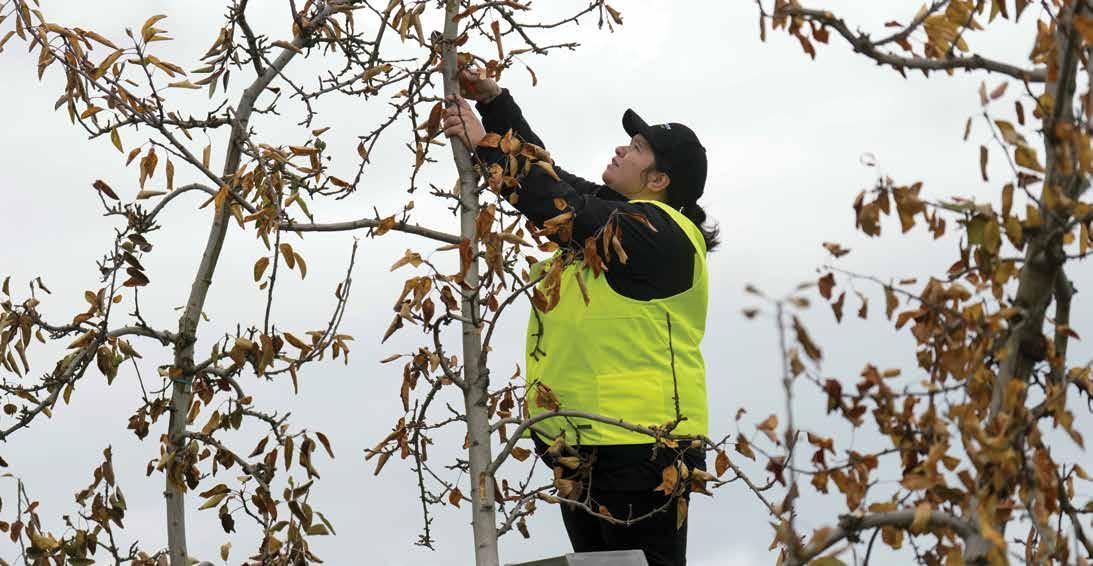 Elaine Fisher
Elaine Fisher
“I think of every one of our staff, no matter their age, as another person’s child and I think about the kind of conditions I would want my children to work in,” says Alix, who was also runner-up in the 2022 Hawke’s Bay Young Fruit Grower of the Year competition.
“As health and safety advisor, my role is to support staff, to work with them to identify any roadblocks to working conditions and to help make orchards better places to work in.
“The facilities and standards at Rockit are very good and when it comes to staff welfare, I look through a mother’s lens. I would not want my kids to work in a place which did not have good safety standards and amenities, where they were not able to talk freely and speak their mind.”
Alix, who does speak her mind and advocates on behalf of staff, says Rockit’s bosses listen to her views and work with her to achieve good outcomes.
Her role involves working with staff from New Zealand and Recognised Seasonal Employer (RSE) scheme workers from Vanuatu and Samoa – some employed directly by Rockit, others by contractors.
“The RSE workers have team leaders who speak clear English, but I try to learn key words of their language and something of their culture too,” she says.
The health and safety role carries a high degree of responsibility, but Alix says the biggest challenges she faces often come from personality clashes.
Alix Te Kere is health and safety advisor for Rockit Management Services
YOUR INDUSTRY 46 The ORCHARDIST : NOVEMBER 2022
“There are some very big personalities in this maledominated industry and some men don’t like to be advised by a female,” she says. “But on the whole, I love working with our staff.”
Alix’s people skills and sense of humour have helped her resolve many potentially tricky situations and also saw her succeed in winning the Hawke’s Bay Young Fruit Grower of the Year speech competition earlier this year.
She joined Rockit Management Services five years ago, a branch of the Rockit company which produces the Rockit™ apple – a miniature hybrid of the popular Gala and Splendour varieties.
She quickly progressed through the ranks, and while she saw herself as becoming a foreman, Rockit management identified something more in her, especially her people skills, subsequently promoting Alix to her current health and safety role last year.

“I don’t get to work hands-on in the orchards as much anymore, but [I] still like to spend time helping with pruning or planting,” she says. “I just like to go out to do normal day-today stuff I miss, and it helps me understand the environment our staff are working in.”
“I don’t like public speaking but the topic I got, ‘Beauty is only skin deep: is there future for imperfect fruit?’ was one I immediately knew I could have fun with and I did,” she says.
Horticulture wasn’t the first career choice for Alix.
“When I became a mum at 17, I needed a job, so at 18 [I] went to work in an orchard. That was not easy, as my dream was to be in hospitality and I had been studying towards that; but when I became a mum my whole career path changed.
“I thought I’d be in the industry for just a year, but I fell in love with horticulture.”
Alix grew up in Flaxmere, Hastings, with her mum, two brothers and a sister.
much more than picking fruit
“We were city kids, but our parents did work in the orchards and we often spent time in a picking platform while they worked. Health and safety was very different then,” she says.
When her second son was born five years after her first, Alix spent two years working in childcare so she could have more time with her children, but she couldn’t wait to get back to horticulture.
Her new role has also brought Alix the work-life balance she has longed for.
“I now have three sons and because I am not working in the orchards all the time, I can be a weekend mum,” she says. “My partner and I love taking our kids and our dog out diving, swimming, fishing and whitebaiting. I also get to be the crazy lady on the sideline at rugby games yelling for my boys’ teams.
“Being able to watch and be part of my kids’ growing up has been the best part of this year for me.”
The opportunities and flexibility horticulture offers are among the reasons Alix recommends the industry as a career choice for young people.
“I do think the industry as a whole needs to better advertise the career paths it has to offer because it’s much more than picking fruit,” she says. “You never know where a career in horticulture might take you. I thought my dream role was to be a foreman, and now I’m part of the management team in a responsible role and I love it.”
To keep up to date with Women in Horticulture, its news and activities and to join the membership database, email: info@women-in-hort.nz. Everyone is welcome.

I thought I’d be in the industry for just a year, but I fell in love with horticulture
I do think the industry as a whole needs to better advertise the career paths it has to offer because it’s
YOUR INDUSTRY The ORCHARDIST : NOVEMBER 2022 47
Innovating for the perfect cherry, every time
Marlborough’s cherry tree of the future grows on a fully trellised system, under narrow sheets of rain cover to protect its fruit from the “dreaded split”. It’s one of many examples across the country where orchards are using innovative growing techniques to achieve the perfect cherry every season. ANNE HARDIE reports.
Caythorpe Family Estate near Blenheim are using the new system, where owner, Simon Bishell, has begun converting the four-hectare cherry orchard to the upright shooting offshoot (UFO) growing system, installing 1.5-metre-wide rain covers for each row as extra insurance.
It took a couple of years of research with Motueka-based sustainable growing structure company, Hortivate, to come up with a retractable rain cover system that fits with the bird cloth. They settled on Italian Valente and Chilean Wayki technology as the system also needed to be able to cope with the nor’westers that blow across the region –which Simon says are Marlborough’s “best kept secret”.
The nor’westers are great for keeping fungus at bay, he says, but prove challenging for erecting rain cover. Hence, Simon chose to erect 1.5m widths of the PVC-polymer cloth with 1.5m between rows to allow the wind to escape, rather than erecting a large area of rain cover that could potentially turn into a kite.
Hail cover is used by apple growers in Nelson over similar trellis systems, but Simon says it gets quite technical to integrate narrow widths of rain cover that needs to be retractable, let alone work with the bird netting above.
Simon has erected one set of concrete poles over the UFO plantings that will be multi-purpose for the fully automated

FEATURE ARTICLE YOUR INDUSTRY 48 The ORCHARDIST : NOVEMBER 2022
Simon in a block of cherry trees grown with a central leader
retractable rain cover, bird netting and tree support wires. That makes it more efficient as well as cheaper. To cover the trellis system with rain cover and bird netting will cost about $200,000 per hectare, excluding installation.

The rain cover will be placed over a few rows of Caythorpe Family Estate’s UFO plantings next year and all going well, will be rolled out over more of the orchard the following year.
Simon says more significant rain events prompted the move to rain cover in a bid to mitigate the risk of losing significant quantities of the valuable fruit when rain coincides with harvest. By mid-August this year, the orchard had already had its usual annual rainfall, and the past couple of harvests have been affected by rain.
The older central leader plantings of cherry trees will be replaced with the UFO system too – the goal being to produce more cherries per hectare while decreasing the reliance on labour. Replacing the central leader plantings will enable a “pedestrian picking system” that requires fewer people because they can pick fruit faster.
“Picking [UFO trees] is almost 50 percent faster than central leader trees, and the same again at pruning,” Simon says. “That’s a significant saving in labour once trees are fully established.
“I do believe some time in the future there will be a robotic harvester for cherries. When that does arrive, if you have 2D canopies it will be much easier to adapt for automation and robotics.”
About half the cherry orchard is now planted in the UFO
growing system. The trees are still young but will reach full production at four years’ old. Simon admits that when he first saw UFO plantings about ten years ago, he was not convinced. It looked like a lot of work installing the system and establishing the crop. But after seeing an established UFO orchard at Lake Terrace Cherries in Central Otago, he had a “lightbulb moment” that resulted in an overhaul of the home crop.
When the initial tree is laid horizontally, it naturally wants to send shoots upward at the trunk. Simon says the first year is spent controlling that upright growth to promote horizontal growth at the terminal end of the tree. Once the horizontal growth is established, management of the system switches to generating good upright branches 200mm apart. Those uprights will then grow to three metres, creating a wall of cherries to harvest.
Conservative estimates put full production at 20 tonnes of fruit per hectare, depending on factors such as pollination which can be fickle in Marlborough if there is not enough winter chilling for fruit buds to become viable.

Average returns for the cherries are approximately $10 to $15 per kilogram, with the bulk of the Caythorpe crop sold through wholesale markets in the North Island, and a small amount sold direct to consumers through its website.
Marlborough cherries ripen before those in Central Otago, hitting that sweet spot in the lead-up to Christmas. At Caythorpe Estate, Rosann is followed by Santina and then Lapins and Stella, with a few of the white Rainier cherries added into the mix.
At just four hectares, the cherry orchard is a small fraction of the business which encompasses 140 hectares of vineyard and 45 hectares for stock and hay. But Simon says that in a good year, the cherry crop can return five times the value of grapes on a per hectare basis.
Blair and Mel McLean in the midst of this year’s crop at pollination
Rain is our nemesis ... You can lose 50 percent of your crop in one event
YOUR INDUSTRY The ORCHARDIST : NOVEMBER 2022 49
Rain cover is aimed at achieving those results more often –a factor of the business that Caythorpe Estate has invested heavily in.
On the other side of Blenheim, Cherrybank Orchard is gearing up to sell cherries from its prime position on State Highway 1. Blair and Mel McLean are heading into their eighth season growing cherries and third as owners after working alongside in a partnership and then buying the ten-hectare orchard from Bernie and Trish Rowe.
Blair and Mel experienced four wet seasons in a row during a short and intense three-week harvest before Christmas. So, like Simon at Caythorpe Estate, they are taking measures to mitigate fruit losses in a changing climate, including rain cover and replacing softer varieties.
“Rain is our nemesis,” says Brian. “You can lose 50 percent of your crop in one event. You can handle frosts at fruit set, but not rain in December.”
Rain leaves water sitting around the stem of the cherries which leads to split fruit with a limited shelf life. Rain is also taken up through the trees’ roots which makes the cherries softer and prone to splitting too. Flying a helicopter over the orchard and driving sprayers between the trees to blow air at the fruit helps to dispel water, but it is an expensive exercise.
They have replaced a large chunk of varieties such as Stella which splits “when a cloud passes over” with 600 Lapins trees which is a large, hardy cherry variety that handles the rain better. About 50 percent of their orchard is now planted in Lapins, with some varieties such as Rosann and Samba still planted too.
The remaining Stella trees will be placed under rain cover soon. The older, established trees have been grown in the central leader style, meaning the McLeans will need to have a rain cover method that is four metres wide in order to cover the trees. It will be erected beneath the existing bird netting structure.
“We had to find something to put on conventional trees with an existing structure and to our budget,” says Mel. “It’s pretty much the number eight wire system.”
It had to be versatile and easy to retract manually once the rain is over. The end result – yet to be installed – is a Central Otago produced method to fit their system.
Newer plantings of Lapins have been grown in the UFO growing system and should not need the protection of rain cover, partly because the cherries are hardier but also because the growing system enables the fruit to dry better after rain.
“We’ve decided UFO is the way to go,” says Mel. “That’s our motto.”
Two hectares of the orchard are now planted in the UFO trellis system and Brian says pickers love it because it is easier and quicker. They will continue to replace central leader trees with UFO plantings, which will set the orchard up for mechanisation down the track.

Cherrybank Orchard sell their fruit at the gate and through MG Marketing to the domestic market. Every year the couple have been growing cherries they had set up to export some of the crop but have only managed to do so for a couple of years due to weather related quality issues.
“You have to make sure you sell quality fruit to export markets,” says Blair.
He says the quality of exported cherries has been dropping as growers push the limits to achieve higher prices, and it risks New Zealand’s reputation for premium fruit. New Zealand exports just 3000 tonnes of cherries compared to Chile’s 300,000 tonnes. Blair says the industry needs to work together to ensure New Zealand cherries continue to be regarded as a premium fruit.
Less than five percent of their crop is sold via the shop or pick-your-own, but it provides a vital link with customers including locals, who have three generations making the annual trip to the orchard to pick cherries.
“It’s almost an old-fashioned thing to do, to walk out into an orchard and pick your own fruit,” says Mel. “There’s health and safety issues with pick-your-own and you can have people breaking branches, but I love the fact you have people walking through the orchard picking their own fruit.”
Through the three-week harvesting frenzy, the orchard employs between 70 and 80 staff, with about 30 of those picking cherries and the remainder in the packhouse. The total number cater for different rosters during the sevenday-a-week harvest. Finding staff has not been an issue, partly due to the timing of the harvest pre-Christmas which works well for school leavers and university students. Mel says they welcome 15-year-olds too, who make boxes and wash buckets in their first year and then return for several years with increasing experience.
“They’ll come back through their university holidays and it’s lovely watching the kids grow.”
About half their seasonal staff are locals and the remainder are backpackers on working holiday visas who view cherries as an opportunity to make good money, with some earning up to $400 a day. The harvest finishes just in time for them to head south for the start of the cherry harvest in Central Otago.
YOUR INDUSTRY 50 The ORCHARDIST : NOVEMBER 2022
Overseas perspectives
Jen Scoular : NZ Avocado chief executive




We have waited a long time to open the windows of the world and I was completely blown away with how much fun it was to be in London this September.
Firstly, I was on holiday. No-one dislikes being on holiday. Secondly, it was warm, while the rain continued across most of New Zealand. Finally, London is a very cool city and the beloved Queen Elizabeth passed away while I was in town. The city – and I’m sure the entire country – bathed in reflections on progress and achievement over her almost 71-year reign.
Some of the challenges remain with Covid requirements and air travel, despite the New Zealand Government relaxing Covid-19 mandates. On the plane going over, my flight neighbour, a specialist in tropical diseases, commented that she could tell the nationality of most of the passengers – New Zealanders and Singaporeans wear masks; no-one else does.
No-one person can mitigate climate change, but every one of us can take those little steps that help. And we can support our growers and farmers to uptake new practises
I loved seeing the huge adverts at Gatwick for Tesco Express – as you return home, pick up the essentials here. Milk, bread and AVOCADOS! We made the top three. Avocados featured in all the fantastic lunch options available in Pret A Manger and Marks & Spencer and in salad bars scattered everywhere. I was blown away with the number of outdoor eating places – I lived in London for nine years – I don’t think we ever ate outside. It was always too damp.
This segues far too easily into the theme of the Agritech Oceania 2035 conference I recently attended in Auckland.
‘How do we incorporate into the primary industries the changes we need to make to mitigate climate change?’ No one person can mitigate climate change, but every one of us can take those little steps that help. And we can support our growers and farmers to uptake new practises to create more sustainable orchards and farms. A great conference – so lovely to hear international speakers in New Zealand in person, and to network with colleagues and new contacts.
There was a mention of social sustainability and my break away told me that I had been neglecting my own wellbeing. After Covid and the challenges of a very tough season – which has merged in to a second very tough season – combined with changes in my team and the continued desire to perform very well, I needed to respect my own needs for a break, for a change in environment and for time to reflect, to recharge and to regain that passion to deliver. It was a wonderful break; I highly recommend you all do a self-check to see if you too are
AVO UPDATE
to create more sustainable orchards and farms
YOUR INDUSTRY The ORCHARDIST : NOVEMBER 2022 51

Talking about change Page 53
LATEST INNOVATIONS AND IMPROVEMENTS
TECHNICAL THE
“De-risking” change
When preparing to write this article I was looking for quotes about change and found a fantastic one from Jimmy Dean: “I can’t change the direction of the wind, but I can adjust my sails to always reach my destination.”
Brookes : AgFirst consultant, Hawke’s Bay
Today’s excellence is tomorrow’s average and in the fruit growing world, change has always happened – and it always will. When growers lose the passion to make changes, it is time to make the ultimate change and do something else.



Learn what you need to change
As a grower, decision making around business change covers a more complex array of understanding than other businesses.
From understanding export markets, fruit quality and compliance, through to general horticulture. Climate implications, science as well as social licence, people management, health and safety, labour planning, training and finally, financial understanding of market returns, yields and the cost of production.
The key to success is being able to identify what is changing around you that will impact your business and what is the most efficient and effective way to mitigate any challenges, risks or threats while maximising opportunities
The key to success is being able to identify what is changing around you that will impact your business and what is the most efficient and effective way to mitigate any challenges, risks or threats while maximising opportunities. Keeping to the sailing theme, you need to be able to “see what weather is coming and make sure your boat and crew are set up correctly to get where you want to go.”
An understanding of Liebig’s law of the minimum is also beneficial. This is the idea that growth (or success) is not dictated by total resources available, but by the scarcest resource. In other words, your business can only be as good as your greatest limiting factor.
When sailing, you can have the best boat in the world, but it is only as good as the crew, or the sails you put up, or the maps you have. Often in growing, we focus our time, effort or
Jonathan
Figure 1 & 2 : Non-established drainage system in a newly planted block leads to poor drainage in a mature canopy
1 2 3 TECHNICAL The ORCHARDIST : NOVEMBER 2022 53
Figure 3 : Support structure failure due to inadequate strength to carry a mature crop load
money into one part of our business, such as reducing costs in low paying blocks. This focus could instead be turned to another part of the business that could offer greater overall gains, such as targeting and achieving excellence in yield within a block with much better market return opportunities.
Another good example of this is where growers have made significant investment into new high density apple blocks, only to have the block fail to achieve excellent results. This is often due to not getting the fundamentals right – adequate support structure, a good drainage system or planting consistent sized trees for easier future management, for example. It is critical for the future to understand both the opportunities and threats that are coming to horticulture. The New Zealand horticulture industry has had a few years of good sailing. Yes, there have been a few storms that have caught people along the way. Meanwhile, others have upgraded their crew, found ways to bring in new technology to make their lives easier, and others have just enjoyed the sailing. How confident are you that you are ready for what the future holds for your horticulture business?
How do we identify where we need to change?
When it comes to growing, we often think of the three main business drivers: returns, yield and cost. Each are equally important to the success of your orchard business.


• Excellence in yield and cost will still be trumped by markets that only deliver poor returns.
• Good market returns still require adequate yield to be sustainable – low yield increases costs.
Figure 5
canopies with a reliance on ladders could be a threat to compliance, health and safety, labour and financial performance
• Excellence in market returns and yield cannot be outweighed by excessive costs of production.
Under these core factors lie several other components that can equally sway your business success by directly impacting on either one or more of the returns, yield and cost model: Fruit quality
• Market access
• Fruit size
• Class 1 recovery
• Spraying and spray programmes
• Compliance – local and in market
• Storage and transportation Labour
• Availability
• Cost
• Compliance / regulation / health and safety
Environmental concerns
• Resource management (water, nutrition)
• Climate adaptation
• Carbon use
• Compliance
Financial performance
• Production optimisation
• Variety and market returns
• Waste minimisation
• Cost control
• Financial management / debt
To be a successful grower, you need to be aware of what is going on around you and what is coming your way.
Figure 4 : A block where change is occurring
TECHNICAL 54 The ORCHARDIST : NOVEMBER 2022
: Certain growing
You need to be able to plan, but also adjust the plan as needed along the way.
Are you confident that your business has a good understanding of each of the subjects above? Which are the ones that you rate as the greatest limiting factors to your business and what factors should be the focus of your business changes in future?
What factors should be the focus of your business changes in future?
As a grower how do you make this all happen?
There is no need to be an expert in all these subjects, nor collect all the key data yourself. Awareness of where your knowledge might be limited, where you need assistance and who needs to be part of your business assistance team is important.
The New Zealand horticulture industry has a good support team to help too:

• Industry peak bodies such as Horticulture New Zealand, NZ Apples & Pears Inc (NZAPI), Zespri etc. – teams are working away at addressing significant challenges – now and in the future – that have been identified at an industry level, often around compliance, labour, market access etc
• Variety managers – club variety managers often provide support to growers to help fast-track the learnings and potential success of their varieties
• Professionals – consultants, accountants, lawyers, human resource advisors – are all adding their experience where challenges or opportunities require higher level insights to target excellence
• Research institutions – these teams not only carry out great research within New Zealand but are often involved in collaborative work across the world
• Horticultural supply companies – these reps can see a lot of good things and are often in growers’ gates discussing thoughts and ideas
• Nurseries – looking at new varieties and rootstock combinations
• Information providers – weather service providers, orchard data capture and analysis, orchard assessments, counts, measurements
• Other growers, management team members, mentors, family
It is important to recognise that everyone sees the world through different lenses. Take this reasonably simple question: how can I best achieve improvements in young tree cumulative production? You would expect quite different answers from a fruit exporting company, a nursery supply person, a chemical sales rep, a fertiliser rep, an irrigation supply company, a resource management expert, an accountant, a bank manager, a horticultural consultant and another grower.
Additionally, if intending to make changes that target excellence in a specific area, look to people that have real issues or experience in this area and had to find their own solutions.
TECHNICAL The ORCHARDIST : NOVEMBER 2022 55
Figure 6 : Platforms may be a solution, but with their usage comes multiple changes within the business
For example:
• If looking for solutions to improve labour efficiency, look to areas where labour is expensive, such as Europe
• Look for water efficiency solutions in desert areas, where water is limited and expensive.
Awareness of where your knowledge might be limited, where you need assistance and who needs to be part of your business assistance team is important
The key for a grower is to get a range of advice and apply that advice to their own context and business circumstances to really understand what is limiting the orchard. Only make changes that are right for your business.
Challenges and opportunities that should be on your radar
Production
New Zealand’s climate is considered among the best in the world for high yields of excellent, quality produce. We need to work to our strengths. High production decreases fixed costs. Do you know how you compare to other growers, both at home and across the world? Grower benchmarking solutions such as the OrchardNet™ software are available to analyse performance from a whole business, right down to an individual block level.
Market Access
Know where your fruit is going and what you need to do to get it there. Get a good support team around you, keep up to date. What does plan B look like? Don’t forget biosecurity risks.
Labour
Pressure to increase wages will continue to be an issue. How are you going to get staff and how will you make sure they are effective and efficient?
Environmental focus
How much do you know about freshwater farm plans, farm environment plans, carbon and water modelling? What do you need to change for a spray-free future? Who have you lined up for help in this area?
Climate adaptation
We have been in a La Niña weather pattern for the last two seasons. Cloudy weather is more consistent during these events, fruit size potential is smaller and it is harder to achieve good fruit quality if yield targets are maxed out. Have you factored this in to optimise results for the coming year?
What are the likely short and long-term implications for climate issues such as floods, droughts, frosts, hail, sunburn? What changes need to be made to best manage these on your orchards?
Finances
Costs are going up and margins are being squeezed. Therefore, as a business, you need to know your numbers. Varieties that are specifically suited for lower paying markets are unlikely to return the required amount to sustain the orchard. These markets are highly focused on reducing the cost to shoppers, and New Zealand is too far from the market to compete directly on price. The returns from moderate paying markets have been an issue for more than 20 years and this looks unlikely to change.
If the block is giving a negative return and this is unlikely to change, it is generally better to just stop farming the block and release limited resources such as labour, management effort and the cashflow needed to get the block to harvest. Reallocate these into targeting excellence on other, better paying blocks.
When making changes, make sure to understand your return-on-investment calculations. Plan block changes wisely as more trees do not guarantee more money. Instil change at the right speed for your business and identify the greatest limitations before you settle on a solution.
When looking to make changes to improve the business for the future, growers need to equip themselves with the best available information so they can set their sails correctly and get to where they need to go. Some of the best ‘left field’ predictions I have seen were shared at conferences, at times often up to ten years before the issue really hit hard at the growing coal face.
In 2010, I attended a conference with guest presenter, Ian Proudfoot from KPMG. Some of his key take home messages were:
• New Zealand cannot compete on the world stage as a low-cost producer of food
• Customers will define what is sustainable
• Water is our most valuable asset
TECHNICAL 56 The ORCHARDIST : NOVEMBER 2022
Since this time, we have seen many changes in the sustainability and water space and these are likely to continue. Our recent success has only been achieved where we are not trying to be the lowest cost producer. However, costs are rising, and we need to keep changing to stay competitive. The latest NZAPI conference focused on adapting to new horizons, with plenty of information around challenges and opportunities that are heading industry’s way. The conference also highlighted people that are focusing on change, as well as those that are dramatic change survivors.
damage and ended up with a better or more profitable fruit size profile, giving a better result than was initially planned. Not all results of extra effort are positive. I have seen damage thinned out of severely damaged crops only to induce other problems with excess tree vigour and increased calcium related storage disorders.
Embrace Change
Change is coming and we need to embrace this if we want to continue to be among the best food producers in the world. “A smooth sea never made a skilled sailor.” (Franklin D Roosevelt)
Changes – adjusting the sails
To be successful we need to be prepared for the changes that are coming and make the best of situations that arise. Over the years, I have seen a large number of challenges and opportunities come and go and I am always amazed that the biggest impact on the success of growers is not the specific incident, but how it is managed.
I have seen examples of disasters such as severe hailstorms or frost events where crops might have been effectively written off early in the season. Then, only to find the crop would have been commercially salvageable at harvest had it not been for pest, disease, or undesirable fruit size that was allowed to develop.
I have also seen blocks where growers thinned hard to remove
To de-risk change in our horticultural businesses, we need to plan for the future and set our business direction. We need to get the right team around us, be well informed with what is going on, have our eyes and ears well open and make appropriate changes when and where they are needed.

Costs are rising, and we need to keep changing to stay competitive
Over the years, I have seen a large number of challenges and opportunities come and go and I am always amazed that the biggest impact on the success of growers is not the specific incident, but how it is managed
TECHNICAL The ORCHARDIST : NOVEMBER 2022 57
A La Niña triple dip summer –Will there be any winners?
Nava Fedaeff and Ben Noll : National Institute of Water & Atmospheric Research (NIWA)
The climate driver La Niña is set to strike for the third consecutive year and will influence our weather patterns in the months ahead – an occurrence called a “triple dip.”

While it is an unusually long time to have the phenomenon at play, it is not unprecedented. The last triple dip event occurred between 1998 and 2000.
So how does La Niña affect our climate?
There is a saying often used by climate scientists and meteorologists when asked about what La Niña (or El Niño) means for the forecast: “we know the average outcome of La Niña, but no single event is average.”
On average, easterly and north-easterly winds tend to become more common during La Niña, bringing moist, rainy conditions to north-eastern areas of the North Island and reduced rainfall to the lower and western South Island. Warmer than average sea and air temperatures generally occur, except in the east of both islands where onshore winds bring more cloud, keeping nights cool and daytime highs subdued.
Just like we know that the average drive time between Auckland and Hamilton can be influenced by a crash or heavy traffic, our 2022 weather to-date has been strongly influenced by La Niña driving along Mother Nature’s highway. There are other climate drivers on the road too, and even the chance of an atmospheric traffic jam to consider. For example, a negative phase of the Indian Ocean Dipole (IOD – a sea surface temperature seesaw in the Indian Ocean) over the last few months has been associated with greater moisture availability for low pressure systems in the wider Australasian region. This has contributed to recent flooding events here and across the ditch – as many growers would have experienced. The IOD is set to ease from November to December though, and then take an off-ramp while other climate drivers move onto the on-ramp.
Tropical cyclone season officially runs from November to April and typically, at least one ex-tropical cyclone passes within 550 km of New Zealand each year. The recently released Southwest Pacific Tropical Cyclone Outlook1 for the coming season considers the risk for an ex-tropical cyclone affecting New Zealand to be near normal to elevated. Extreme events like this can bring a month’s worth of rain or more in just a day or two. We know from
previous events that there is a near-equal probability of an ex-tropical cyclone passing to either the east or west of the North Island.
What goes into an outlook
To understand what the season ahead may hold we need to consider all the climate drivers at play, as well as the impact of an already warmer climate on these.
When NIWA scientists get together to update NIWA’s Seasonal Climate Outlook2 each month, there are three broad areas of discussion. To start, we always look in the rear-view mirror. What has happened to date? How is it progressing and does it match up with expectations? You can then turn your attention to the front windscreen. Several sophisticated computer models consider a range of data that describes what is happening now and use that information to project forward. As the saying goes, “all models are wrong, but some are useful.” As meteorologists, we combine our knowledge of how the earth system works, with our understanding of what the models show. When did a model last update and did it pick up on the atmospheric traffic jam that recently developed? Should we ignore this model as it drives poorly in wet conditions? Are they all taking the same route to Hamilton or are some veering off and going to Tauranga?
Another tool in the prediction toolbox is analogues – past seasons that had similar climate drivers. These can be both objective (automatically chosen based on a set of criteria) or subjective (chosen by an expert). While the official summer outlook won’t be released for another month, Figure 1 shows three plausible analogues of air pressure for our summer ahead. Broadly, we expect more east to northeasterly winds than normal, with higher than usual pressure to the south and lower than usual pressure to the northwest. However, the nuance is in the detail and we’re yet to see exactly how those pressure systems will line up.
The most recent analogue in the mix is the summer of last year.3 It was our fifth warmest summer on record. Summer rainfall was highly variable and featured extended dry spells alongside extreme rainfall events (two ex-tropical cyclones affected the country).
A common feature of La Niña in New Zealand is marine heatwaves. These can provide extra fuel to our climate drivers. Warmer than average seas keep nights warm on
58 The ORCHARDIST : NOVEMBER 2022
SUMMER 1998/99
SUMMER 2010/11
SUMMER 2021/22
land – especially in coastal areas – and provide a warmer start to the day, allowing daytime highs to get higher than usual. Marine heatwaves can also invigorate incoming storms, adding both energy and moisture. Coastal waters near the north and west of both islands are already warmer than usual for the time of year, and we expect this trend to continue as we approach summer.

Does anyone win in a triple dip?
There are always ‘winners’ and ‘losers’ to any climatic pattern. It really depends where you are and what you’re doing (or growing). Last year, late summer rain for Hawke’s Bay affected apple crops and led to blueberries splitting during harvest, but apples in the South Island had a good season. Many grape growers prepared for humid and wet conditions by opening up canopies to increase airflow. Disease pressure was still an issue, but the impact was minimised.
Harnessing forecasts, from weather to seasonal climate, and using them to plan and prepare as best as possible is key.
And don’t forget that we must all expect the unexpected while travelling along Mother Nature’s highway – hazards may pop up that require us to be agile and shift course. Although forecasts are much more accurate than they were a few decades ago and continue to improve all the time, they will never be perfect. Construction is ever-present on this highway.
The November to January Seasonal Climate Outlook is due to be released on 28 October and will be accompanied by a video and livestream on our Facebook page discussing the drivers along the highway that leads to summer.
1. https://niwa.co.nz/climate/southwest-pacific-tropical-cycloneoutlook/southwest-pacific-tropical-cyclone-outlook-october-2022







https://niwa.co.nz/climate/seasonal-climate-outlook
https://niwa.co.nz/climate/summaries/seasonal/summer-2021-22
 Figure 1 : Air pressure anomalies (differences from average) for three analogue La Niña summers. Red colours indicate higher than normal pressure while blue areas show lower than normal pressure
Figure 2 : Summer 2021–22 temperature difference from average (left) and rainfall difference from average (right). Note that the average period for comparison is 1981–2010
Figure 1 : Air pressure anomalies (differences from average) for three analogue La Niña summers. Red colours indicate higher than normal pressure while blue areas show lower than normal pressure
Figure 2 : Summer 2021–22 temperature difference from average (left) and rainfall difference from average (right). Note that the average period for comparison is 1981–2010
NIWA SEASONAL CLIMATE OUTLOOKS Predictions of temperature, rainfall, soil moisture and river flows. niwa.co.nz/outlook
The ORCHARDIST : NOVEMBER 2022 59 Article sponsored by
2.
3.
Experience and product knowledge assists customers with orchard conversions
The conversion of agricultural land into kiwifruit orchards has been popular in recent years in the Bay of Plenty. Steve Wood, Fruitfed Supplies Technical Horticultural Representative based in Te Puke, shares how he assists orchard owners with converting land for horticultural use.

With most of Steve’s customers being kiwifruit growers, he has significant experience and knowledge of how to convert paddocks into productive orchards using the best systems and products available.
Forming a part of the initial discussions, Steve says he and the grower plan the infrastructure required for the orchard, based on the size of the block. Planning the materials used to create the canopy structures requires product knowledge. As Steve says, “price, availability and quality are the main factors involved in determining the materials used. I look at the options available at the time and recommend products that offer the best price and can be delivered within an acceptable timeframe.”
“Recently, a customer bought a dairy farm for conversion to a kiwifruit orchard,” says Steve. “Once the 45 hectares of rolling hills were contoured into flat land, we supplied all the materials needed to build the orchard. That included the posts, strainers, cable and wire needed to create the support and pergola structures for the kiwifruit plants, plus windbreak netting to protect the vines from adverse weather.”
Steve also helped with the more technical aspects of the development including installing frost fans and planning the soil nutrition.
Planning an efficient irrigation system starts with understanding the amount of water consented for use on the block. From there, the volume of water available
for use each day is calculated, factoring in the size of the orchard. As Steve explains, “this gives an indication of the most appropriate flow rate to be delivered to all areas of the orchard. To design a tailored system that will meet the needs of the orchard, we bring in irrigation specialists.”
Once an orchard is established, Steve helps with the regular maintenance required for the canopy structures and irrigation systems. With irrigation systems often used for fighting frosts, Steve says he reaches out to customers to remind them in late winter to complete a maintenance check so should a frost hit, the system is fully functional. “We service the inline injection units for fertigation as well as assisting with the replacement of componentry for the irrigation system. If replacement sprinklers are required, I simply take one to identify the correct part and place the order with the supplier. We aim to make the maintenance process as easy as we can for our customers,” says Steve.
Visit fruitfedsupplies.co.nz to find out more about Fruitfed Supplies’ range of products and services, or to find a store near you.
Fruitfed Supplies is a trading division of PGG Wrightson Ltd (PGW). PGW and the writer do not warrant the information’s accuracy, quality, outcome or fitness for any purpose.
WHAT’S NEW 60 The ORCHARDIST : NOVEMBER 2022
Fruitfed Supplies Technical Horticultural Representative, Steve Wood
Making inputs work harder
Levity Crop Science, one of agriculture’s most innovative companies, is expanding their range to be made available in New Zealand.
Levity managing director David Marks says “Levity is putting crop science at the heart of our product development. Our expertise is in understanding how plants use nutrients to grow, and then adapting the inputs so that the crop makes better use of them. It allows us to use very low inputs whilst achieving better results.”

“Our approach is to talk to growers, understand the challenges they face and then go back to the lab and create products that can help them. Our product range will help New Zealand growers address four key challenges: shelf life, maturity, increasing yield without reducing quality, and stress. Our job is to understand how science can help growers, and deliver easy to use products that solve their problems.”
Levity products are already used extensively around the world and offer growers effective low-rate products that improve yield and quality.
Roger Blyth from Seed & Field Services says, “after seeing improvements in our arable and vegetable crops, and the positive horticultural field trial results, we are excited to expand the benefits into other crops.”
Seed & Field Services is looking forward to delivering Levity Crop Science’s technology to New Zealand growers. Levity’s product range relevant to orchard production include:


Lono – For increased yield and fruit size
A smart nitrogen fertiliser which focuses plants on reproductive growth (flowers fruit, and tubers) encouraging yield rather than the vegetative growth stimulated by conventional nitrogen fertilisers. Lono uses Levity’s LimiN™ chemistry to hold N in the amine form, which delivers better photosynthesis, root growth and yield.

Albina – For quality and shelf life
Albina is a pioneering calcium product which can reduce physiological disorders like bitter pit, improve flower set, fruit holding, fruit firmness and shelf life of fruit crops. Albina uses LoCal™ technology to help plants absorb calcium, a nutrient which can improve quality but is poorly absorbed by fruit.
Sulis – For improved quality, colour and brix
Sulis builds maturity (colour and brix) in fruit crops. It works by supplying molybdenum and boron in a special
formulation which helps fruit maximise the production of the enzymes responsible for maturation. Sulis also helps stabilise cell walls, so whilst colour and sugars build, fruit maintains good firmness.
Zeme – For stronger, healthier crops
Zeme is a pioneering new silicon product which improves strength, health and vigour of crops and protects against stress. Zeme uses Si-X™ technology to help plants transport and distribute silicon, a nutrient which can improve quality but is poorly taken up and distributed by plants.
Indra – For improved stress tolerance
Indra improves growth and quality of crops by helping them cope with stress caused by heat, cold, salinity, drought and high ultraviolet (UV) light. Indra stimulates antioxidant production in crops, which protects crops from loss of quality and yield during stressful growing conditions.
For more information visit Levitycropscience.com or contact: Michelle Osgood – Business Development, Seed & Field Services SI Ltd Tel. 021 330 676
WHAT’S NEW The ORCHARDIST : NOVEMBER 2022 61
Treated Untreated


BAC 2431 We’re with you in the field cropscience.bayer.co.nz Optimised two-way systemic activity, delivered by a class leading formulation. • Optimised formulation gives unparalleled penetration • Unrivaled and proven efficacy • Proven crop safety • Soft on key beneficials Movento 100SC - for results you can trust. Movento 100SC is registered pursuant to the ACVM Act 1997, No. P8434 and approved pursuant to the HSNO Act 1996, No. HSR100545. Movento® is a registered trademark of the Bayer Group. © Bayer Crop Science 2022. You can’t afford second best.



































































 Aimee Wilson
Aimee Wilson




























































 PlantTech's apple crop estimation research uses machine readable codes to assist in large scale data collection
PlantTech's apple crop estimation research uses machine readable codes to assist in large scale data collection






























 Elaine Fisher
Elaine Fisher























 Figure 1 : Air pressure anomalies (differences from average) for three analogue La Niña summers. Red colours indicate higher than normal pressure while blue areas show lower than normal pressure
Figure 2 : Summer 2021–22 temperature difference from average (left) and rainfall difference from average (right). Note that the average period for comparison is 1981–2010
Figure 1 : Air pressure anomalies (differences from average) for three analogue La Niña summers. Red colours indicate higher than normal pressure while blue areas show lower than normal pressure
Figure 2 : Summer 2021–22 temperature difference from average (left) and rainfall difference from average (right). Note that the average period for comparison is 1981–2010






